#AP fruits parlor
Explore tagged Tumblr posts
Text
Angelic Pretty Fruits Parlor

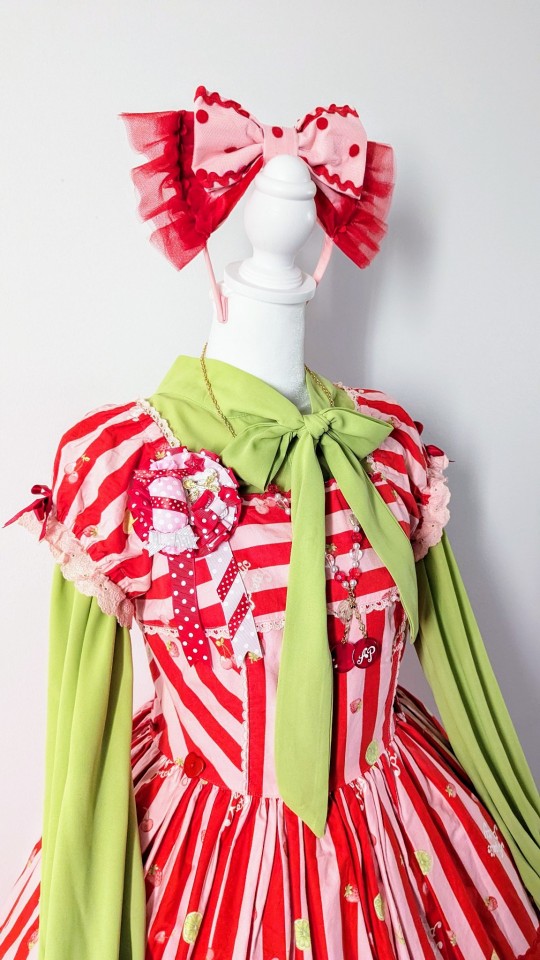
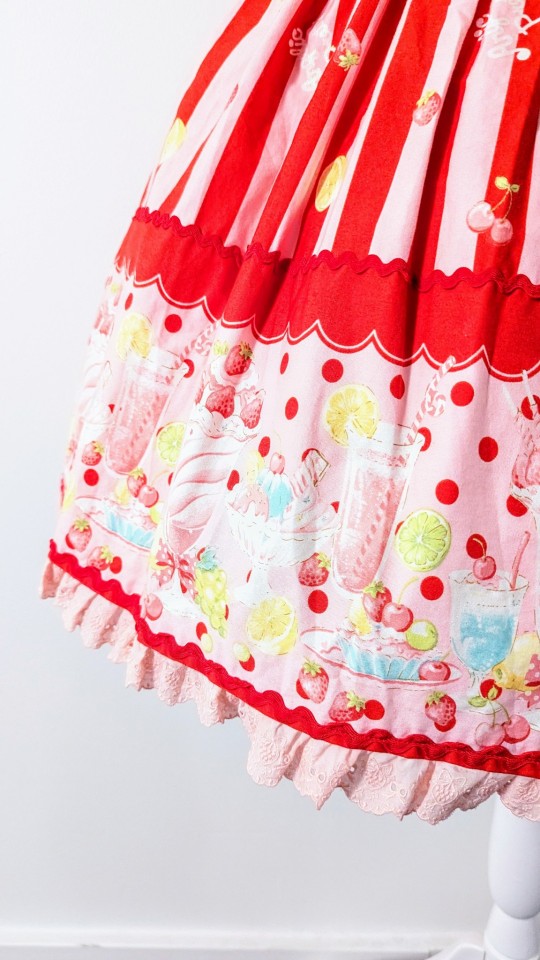
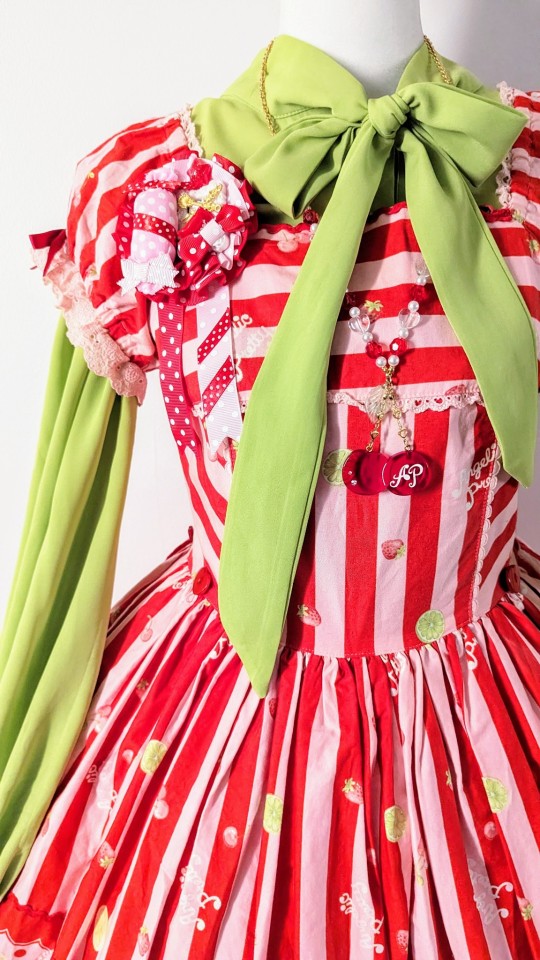
OP- Angelic Pretty
Blouse- Unique Vintage
Necklace- Angelic Pretty
Headbow- La Corona Rosada (Etsy)
#egl fashion#lolita fashion#egl community#sweet lolita#egl coord#egl coordinate#egl wardrobe#faeryndipitymannequin#egl style#angelic pretty#angelic pretty fruits parlor#ap fruits parlor#red and pink#red and green#pink and green#fruit#citrus#unique vintage#la corona rosada#mannequin coord#stripes#polka dots#lime green
95 notes
·
View notes
Text
ASSIS BRASIL, Brazil (AP) — Dozens of migrants sleep in a mosquito-infested six-bedroom wooden shelter in the Brazilian Amazon, their dreams of a better life in the U.S. on hold because of President Joe Biden’shalt on asylum.
Johany “Flaca” Rodríguez, 48, was ready to leave behind the struggles of life in Venezuela. She has been waiting in the shelter holding 45 people in Assis Brasil, a city of 7,000 residents bordering Peru, because others told her how difficult the journey to the U.S. has become.
Migrants, police, officials and analysts say Biden’s actions have caused a wait-and-see attitude among migrants who are staying in Latin America’s biggest economy, at least for now. Like anywhere along migrants’ routes toward hoped-for new lives, local communities are finding it hard to meet new populations’ needs.
After sleeping on dirty mattresses and in half-torn hammocks, and eating rice, beans and ground beef, Rodríguez decided this month that she and her dog Kiko would spend a few weeks with friends in the southern state of Rio Grande do Sul.
Wearing a headband, leggings and a small backpack, Rodríguez woke early to walk more than 100 kilometers (62 miles) for two days to a nearby city of 27,000 residents. There, she hopes to make some money and take a bus to Brazil’s south, then reach the U.S. one day.
“I have to stay here until it is safer to go,” Rodríguez said. “I am not super happy about staying (in Brazil), but that’s what I can do.”
Brazil saw waves of migrants passing through to North America in the first part of the year. There were Indians, Bengalis, Senegalese and Nigerians, among others, said Rêmullo Diniz, the coordinator of Gefron, Acre state’s police group for border operations,
When Biden said he was going to crack down, many people in those groups began staying in their countries instead of heading to Latin America, Brazilian government officials and independent analysts said. For citizens of South American countries, it’s easier. Brazil allows residents of its 10 neighboring nations to stay visa-free for up to two years.
The Biden administration said last week that arrests for illegal crossings from Mexico fell more than 40% since asylum processing was temporarily suspended at the U.S. border with Mexico on June 5. Arrests fell below 2,400 a day for the first time during Biden’s presidency.
Acre state offers a snapshot of the attitude among many migrants, and raises the possibility that Acre and other resting spots will become long-term hosts.
The city of Assis Brasil has little to offer to migrants but the wooden shelter where Rodríguez was staying and a school gymnasium where 15 men can sleep. There are two small hotels and a bus stop used by vans crossing into Peru. It has five restaurants scattered along its main road, two grocery shops and an ice cream parlor that has Amazon flavors like local fruits cupuacu and tapereba. Migrants frequently beg for money at the city’s only square.
There are three daily flights into state capital Rio Branco, where 21-year-old Jay came from India en route to the U.S. to study engineering. He declined to disclose his hometown and his last name.
Wearing a white cap reading “RIO DE JANEIRO,” he said that “it would take too long if I just sat and waited,” in India.
“It is a long trip, very risky. But it is my dream to study there and I will accomplish it,” he said.
Brazil’s westernmost state is a remote enclave in the middle of the rainforest, used by tourists as part of an alternative route to visit Cuzco, once the capital of the Inca empire in Peru.
One of Assis’ main attractions for locals is sitting on the benches of its main square Senador Guiomard to watch soccer on TV and eat barbecue. The small city’s founders came to the Amazon in 1908 to start a rubber plantation that 50 years later became a city. Not much has changed since, despite the BR-317 road that runs by it, the only land connection between Brazil and Peru. When residents of Assis Brasil are bored, and they often are, they go to neighboring Peruvian city of Iñapari to have a drink, generally a pisco sour.
Venezuelan migrant Alexander Guedes Martinez, 27, said he will stay as long as needed to get more cash and maybe in a year go to Houston, where he has family. He came with his 17-year-old partner and their 5-month-old baby.
At the Assis Brasil shelter where they were staying last month, he said that he hopes “to go (back) to Venezuela and get key documents to try to cross in a better fashion.”
“I want to be cautious because of my daughter,” he said. “Being here helps.”
Acre state’s patrol has about 40 agents to inspect 2,600 kilometers (1,615 miles) of border with Peru and Bolivia. A main road connects the three countries, but local police say that many migrants also move through the forest, some of them carrying drugs.
Cuban migrant Miguel Hidalgo, 52, tried to get to the U.S. years ago. He left the island to Suriname, then came to Brazil and doesn’t plan on leaving any time soon.
“I like Brazil. I have been here for a short time, but people are not prejudiced against me, people are lovely,” he said. “I want to live like a human being. I am not asking for any riches. I want to live in tranquility, help my family in Cuba.”
Acre Gov. Gladson Camelli said in a statement to the AP that he is worried about a bigger influx of South American migrants coming soon.
“Our government has tried to do its part in the humanitarian support,” he said.
Assis Brasil’s Mayor Jerry Correia also is bracing for more demand. City hall is feeding about 60 migrants every day and voters are feeling upset in a year of mayoral elections.
“This is all on our back. This is a policy that has to be handled by the federal government,” Correia said. “People don’t know what happens on our border. We need to be seen.”
2 notes
·
View notes
Note
2 and 8 for the ask thing? 👀
2. What was your first piece?
My first lolita specific main piece that I bought was a sax gingham bunny pockets set from bodyline. It's still in my closet for nostalgia. My first brand items were two AP skirts I got on egl com sales. AP's strawberry picking in pink, and a red gingham AP skirt.
8. What are some details you wish to see more of?
Hmm, are pockets a detail? Because I've been buying meta and AP has me spoiled when it comes to pockets. But I also really like decorative pockets. Those little felt embroidery patches AP puts on dresses that are detachable are also top notch. I wear my fruits parlor ones with everything. I also am really into the way pinkhouse does cutwork and pintucks and embroidery at the hems of so many things and I want to see more of that in classic lolita. Also embroidery and appliqué being used with print series ♡
6 notes
·
View notes
Text

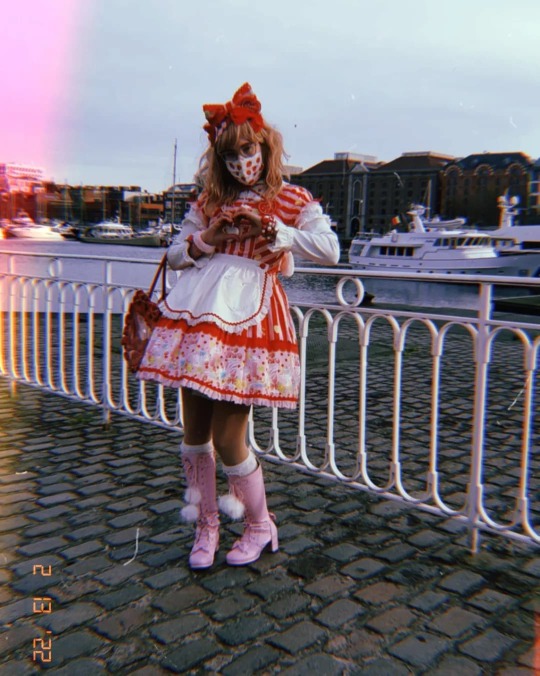
Galentine's 2022 with the Belgium comm ♥
7 notes
·
View notes
Text
Days 154-157: Vienna (The Habsburg Hustle)

For centuries, Vienna was the de facto capital of Europe. From here, the Habsburg dynasty pulled the strings of the most powerful kingdoms and empires on the continent--when it wasn’t ruling them directly.
So it’s fitting that much of our time in this city was spent in the Hofburg, a sprawling complex of palaces, treasuries, and art galleries that once housed the Habsburgs and continues to house much of their wealth.
And their wealth is really all that seems to remain of the Habsburgs.
I remember a bit about the Habsburg empires from my high-school AP European History class, and a bit more from our time in Spain and Eastern Europe earlier in our trip. But it is a long and complex dynasty, not a simple monarchical line like the kings and queens of England or France. Like I said before, the Habsburgs were string-pullers and kingmakers. They eventually took direct control over most of Europe, but as a complex empire of countless intertwined kingdoms, duchies, and principalities.
Jessica and I went into the Hofburg hoping to gain a clearer understanding and greater appreciation for how the Habsburgs came into their power and expanded it over the centuries. We did get a little of that, but mainly what we got was an in-your-face display of just how obscenely wealthy the Habsburgs became by the end of their reign in 1918. Seriously, I didn’t think that anything could top the gilded grandeur of the Vatican, but this blows it away.
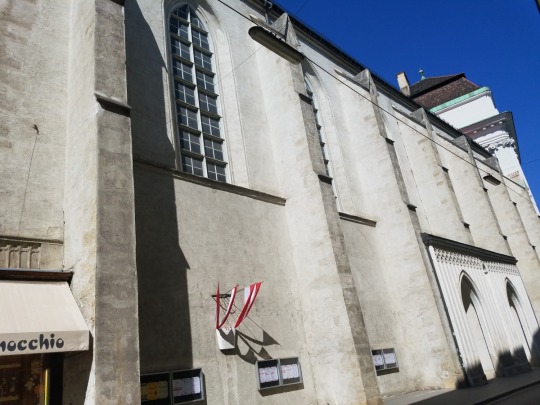
Our visit started humbly enough with Sunday mass at the historic Augustinian church. Originally part of an Augustinian abbey, it was later incorporated into the Hofburg and converted into the imperial chapel.
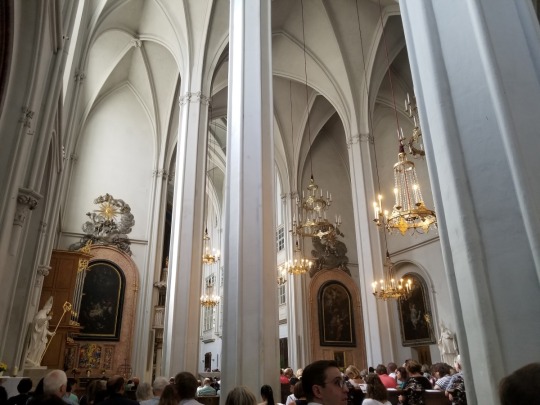
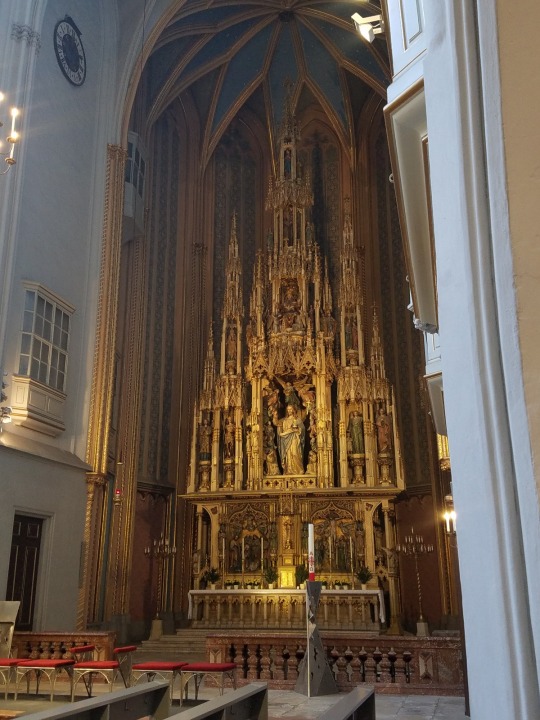
I feel a bit sacrilegious saying this, but as a tourist, Sunday mass at the Augustinian church is a great way to kill three birds with one stone. You get to see the Imperial chapel, witness a traditional Catholic mass in one of the great historical bastions of Catholicism, and you basically get a free Mozart concert from the church’s choir and orchestra.
And we definitely weren’t the only people to think so. This was easily the most crowded church service we attended during the entire trip.
On our visit, they performed Mozart’s “Missa Brevis in G Major.” It was Mozart’s first full mass, written when he was twelve years old.
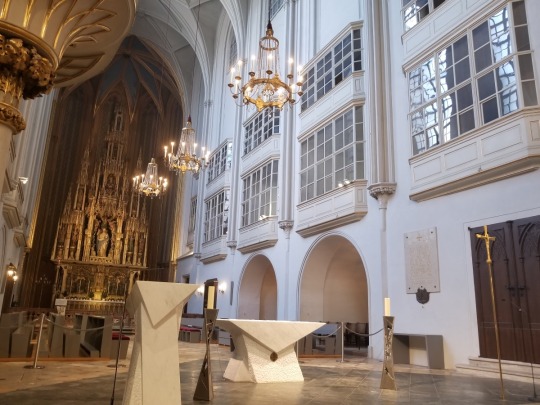
Beyond its historical significance, the church itself is fairly plain. The right side of the church is built up against the side of the imperial apartments, and instead of stained glass windows, the windows to the right of the choir connect to the apartments themselves--so the Habsburgs could attend mass without leaving their parlor.
There is a room in the church filled with the ashes chamber filled with urns containing the cremated hearts of dozens of Habsburg rulers. We didn’t get to see it, however, since it was on the other side of a chapel being used for a service.
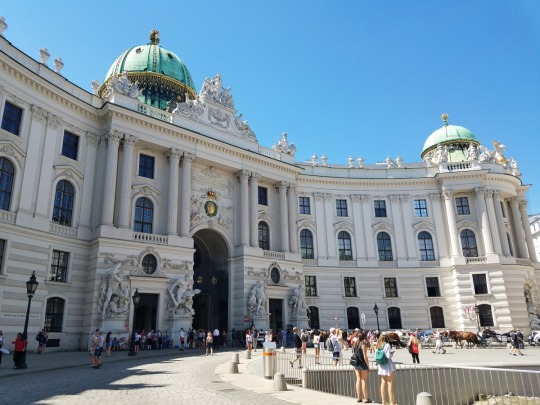
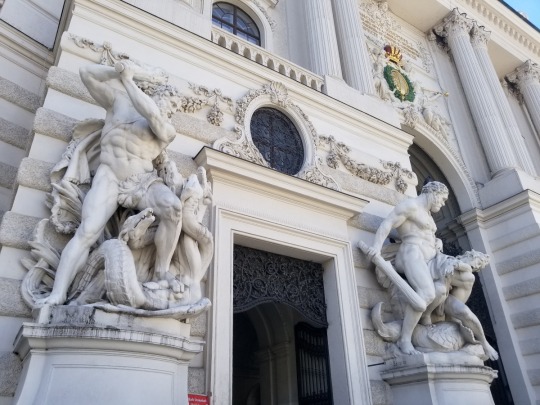
Next, we toured the imperial apartments themselves. And of course, decorating the entrance were statues of our old friends Hercules and his club.
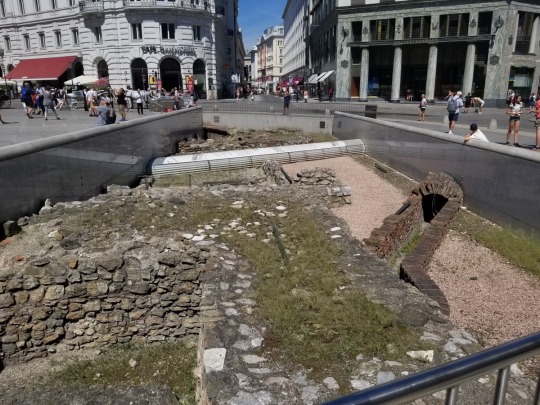
Outside the grand entrance is an exposed section of Roman ruins. Like virtually all European dynasties, the Habsburgs were obsessed with linking their rule to the heritage of the Roman Empire.
The apartments are divided into three exhibits: the imperial silver collection, an exhibit on the mysterious and misunderstood Empress Sisi, and the apartments themselves.
Going in, I wasn’t particularly interested in seeing the silverware exhibit and would have been more than happy to skip through it. Jessica wanted to see it, however, and it ended up being absolutely spectacular.
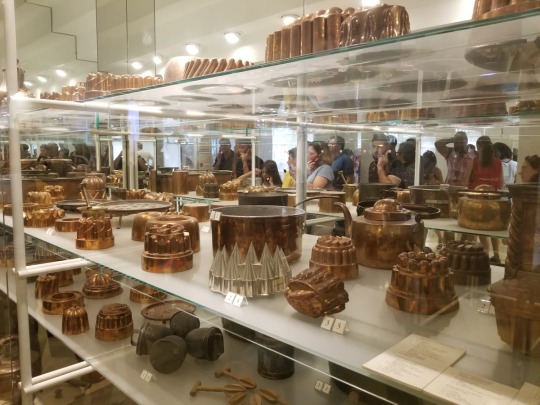
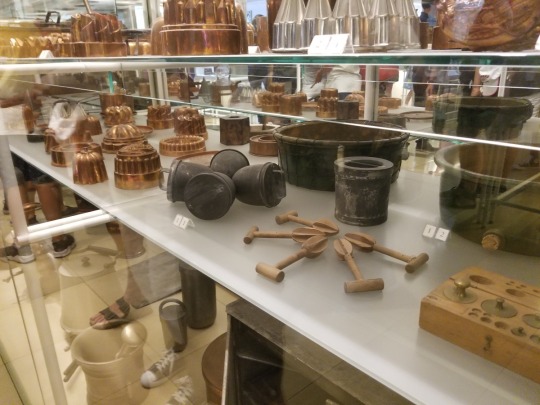
The collection was much more than just silverware. It started with room full of decorative baking pans and dessert molds, then moved onto increasingly extraordinary tableware and centerpieces.
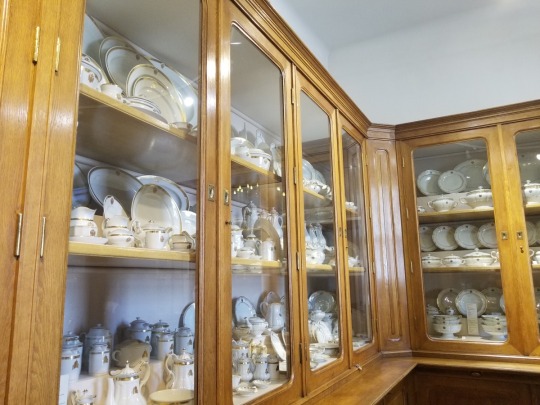
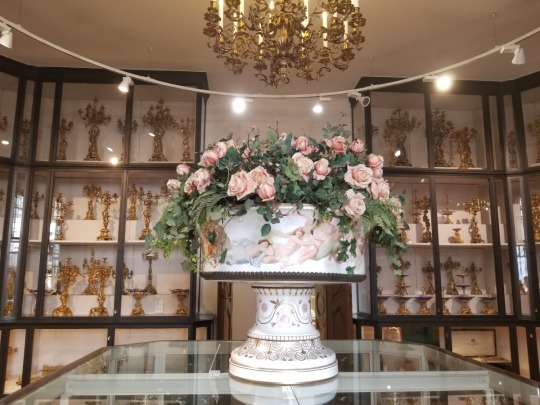

This is where we really got our first taste of Habsburg opulence. But only a taste.
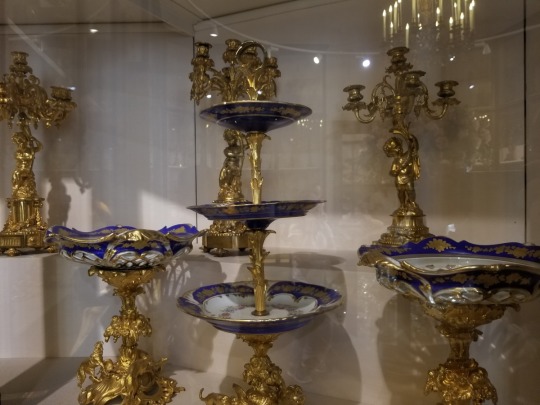
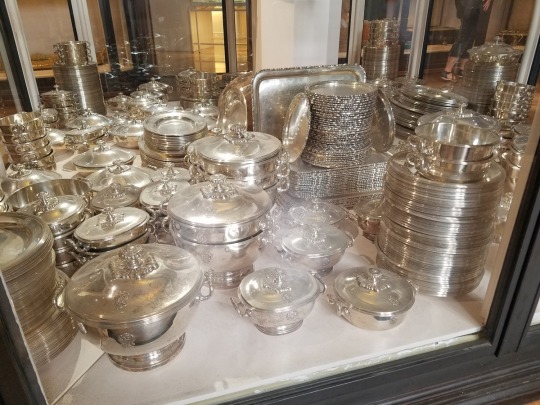
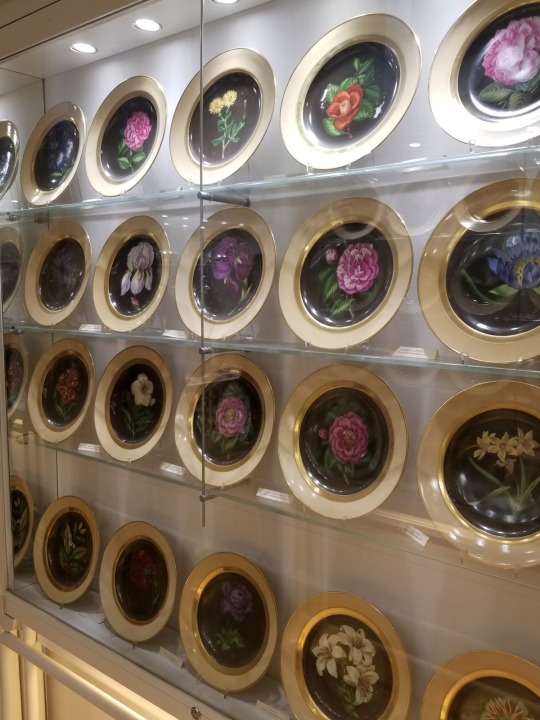
Room after room were filled with silver, gilt, and ceramic services representing centuries of evolving tastes and diplomatic relations. Each service involved a monumental level of craftsmanship and material expense. Some sets were so valuable that they were literally used as bargaining chips between countries looking to end or avoid a war.
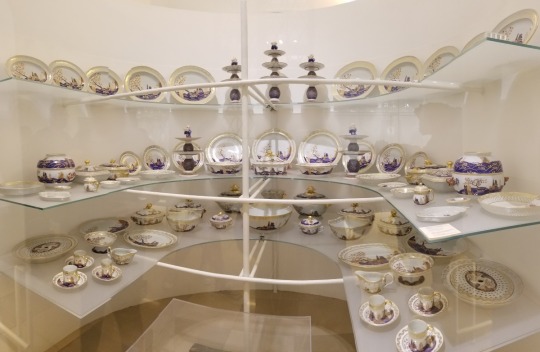
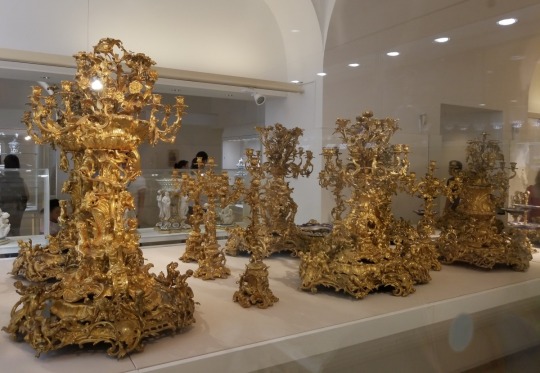
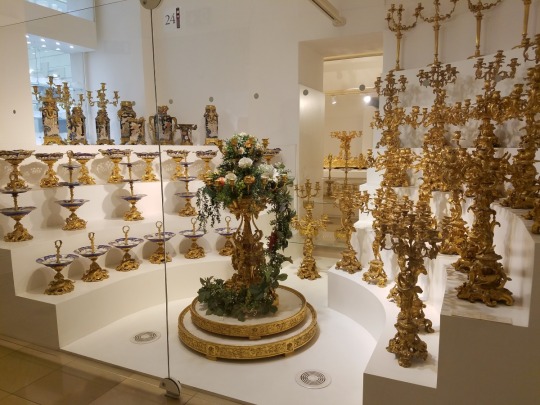
It just went on and on and on. Not only were the pieces nearly countless, each one was a masterpiece of artistry and craftsmanship.
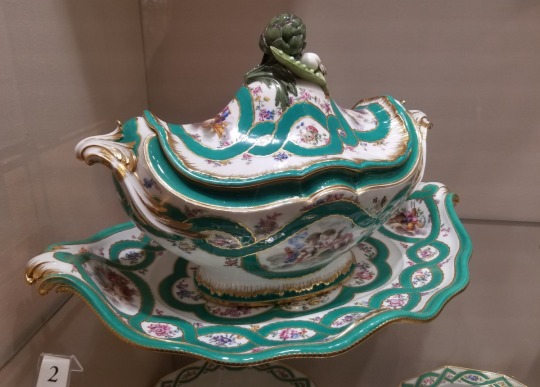
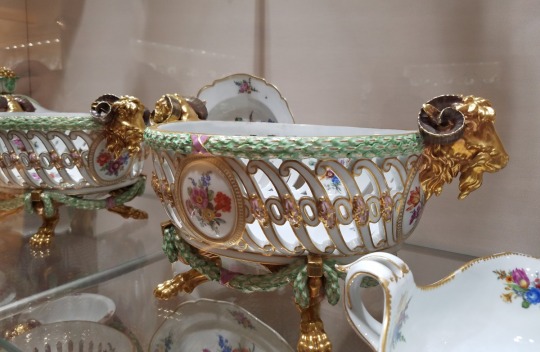
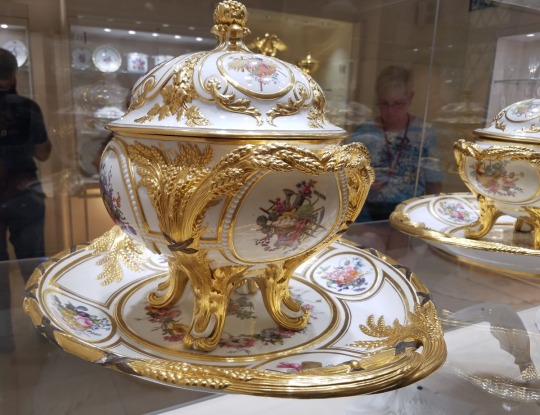
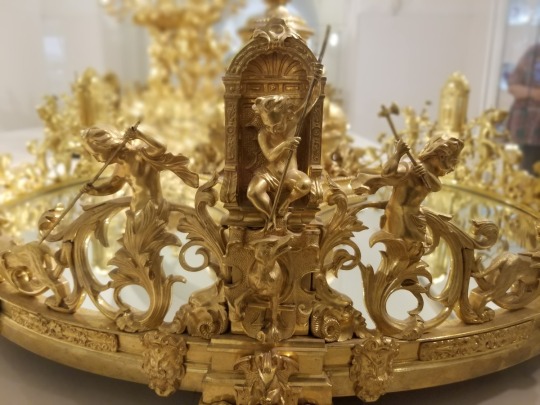
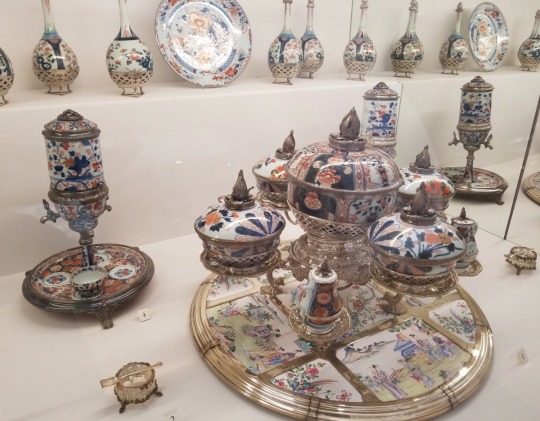
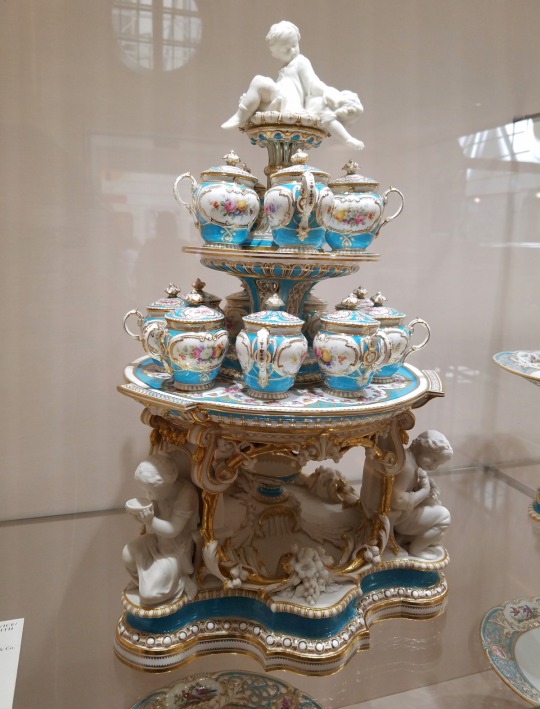
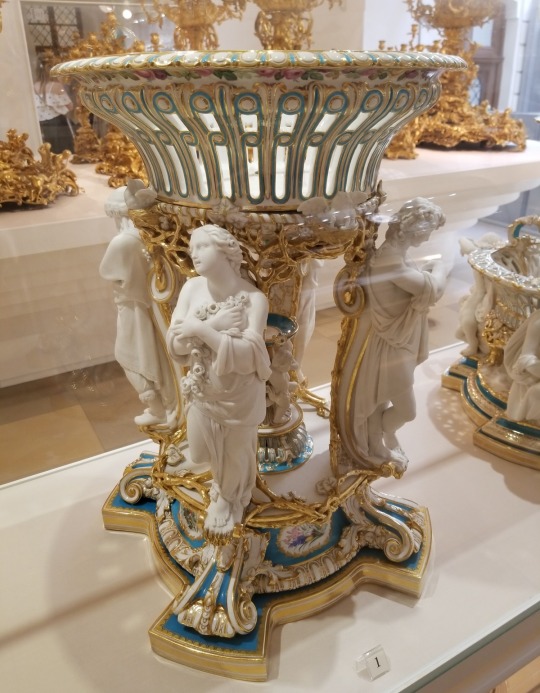
And as massive as the current collection is, it only represents a fraction of the original collection, much of which was sold or melted down for bullion during the Napoleonic wars.
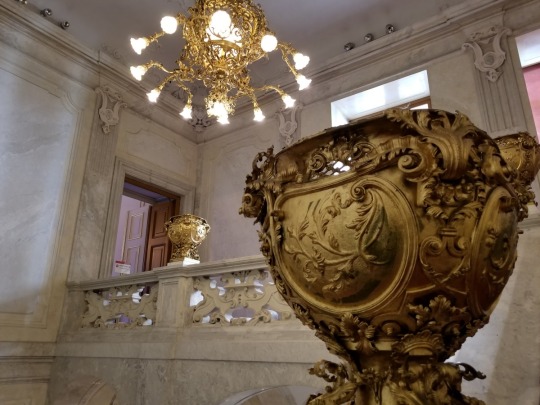
Next up was the Sisi Museum. Sisi--or rather Empress Elisabeth of Austria--was the wife of Emperor Franz Josef from 1854 until her assassination in 1898. Sisi now holds a mythical reputation for her beauty and innocence, but this exhibit explains the darker truth.
It starts with her childhood in Bavaria as the daughter of a duke. She enjoyed a relatively informal, carefree childhood until she was arranged to marry Emperor Franz Josef at the age of 15. An introvert with a hatred of confinement, everything about palace life was abhorrent to her. Descending into melancholy, she increasingly shut herself away from palace life to read, write poetry, and ride horses. She was a famously skilled and daring rider.
As she aged, Sisi became increasingly obsessed with maintaining her famed beauty. She adopted intense dieting and exercise regimens, exotic cosmetic treatments, and wore extremely tight corsets. For almost all of her life, the 5′8″ Sisi maintained a weight of 100 pounds and a 20 inch waist.
(There's a statue of Sisi at the beginning of the museum, and Jessica and I both noticed that her face looked quite a bit like Jessica's mom (and my aunt) Donna. For whatever reason, however, the resemblance doesn't really carry into the photographs and paintings of Sisi.)
At the age of 58, things took a turn for the worse for Sisi when her only son, Crown Prince Rudolf, died in an apparent murder-suicide pact with his mistress. Not only did this devastate Sisi and her marriage with Franz Josef, it destabilized the Habsburg line of succession and accelerated the deterioration of the empire that lead to the outbreak of World War I.
(That night, Jessica and I happened to watch The Illusionist, which our host had on DVD. We knew that it took place in Vienna, but we had no idea that it’s plot revolves around a fictionalized version of Rudolf’s murder-suicide. The longer this trip goes on, the more ridiculous the coincidences we run into become.)
From then on, Sisi retreated from social life entirely and took to wearing only black. In her writings, she fantasized about wearing a veil so that she would never have to be seen by anyone again. When she was discussed publicly at all, it was with disapproval of her absenteeism and her cold treatment of her husband, who was an extraordinarily popular emperor.
Finally, her story came to an end when she was stabbed to death by an Italian anarchist in Geneva. He had traveled to the city to assassinate someone else, but he changed his plans at the last minute and killed Sisi instead.
It was only after her death that Sisi became a publicly revered figure. Emperor Franz Josef’s intense grief inspired memorials to Sisi across the country, and as savvy businessmen realized the profit to be made in selling Sisi-related trinkets, her reputation grew to mythic proportions. Ironically, the gift shop at the end of the tour is filled with just those sorts of trinkets that feed into the blind reverence that the museum was made to illuminate.
The end of the Sisi exhibit leads right on into the rooms where Franz Josef worked, slept, and saw visitors--furnished just as they were in his time.
We learned how Franz Josef was an extraordinarily dedicated ruler--working every day from before dawn until after dark. He made it a point that any citizen of the empire, no matter how lowly, could request an audience with him. On average, he would have a hundred such meetings every morning.
When he wasn’t meeting with his nobles and citizenry, Franz Josef was doing paperwork. He was interested in every facet of his empire, and he read every document he signed. While many leaders throughout history suffered for their disinterest in the minutiae of ruling, Franz Josef fell too far in the other direction.
His bedroom, though palatial in build, was austerely furnished. He slept in a small iron bed and used a small, plain washbasin. The only real ornamentation was a kneeler that Franz Josef used for prayer. Like all good Habsburgs, Franz Josef was a devout Catholic.
Franz Josef was also a devoted husband and father. Pictures of Sisi and their children were some of the few embellishments that occupied his otherwise austere desk.
Next to Franz Josef’s rooms were Sisi’s rooms, which even the emperor himself could only enter after ringing a bell for permission. Unlike Franz Josef’s rooms, Sisi’s were large and lavishly furnished.
Next to her bedroom, we saw Sisi's dressing and exercise room--where most of her time at the apartments was spent. Her ankle-length hair required three hours of brushing every day, and she used the time to read classics and study foreign languages. When she wasn’t reading, writing, or riding, Sisi would exercise in this room using a ladder, pull-up bar, and set of parallel rings.
Recreational exercise wasn’t really a thing at this point in history--especially among royalty--so this only added to Sisi’s borderline-scandalous reputation for eccentricity.
Unlike Franz Josef’s study, which was filled with pictures of Sisi and their children, Sisi’s exercise room was filled with pictures of her childhood home and family in Bavaria. It seems clear that the balance of affection between them was painfully uneven.
Another particularly interesting pair of rooms were painted from floor to ceiling to look like a tropical paradise, complete with vines, fruits, and colorful birds. They’re called the Bergl Rooms, after the artist who painted them.
Outside, walked around the epically scaled palace, seeing gardens and monuments, including a particularly impressive one dedicated to Mozart.
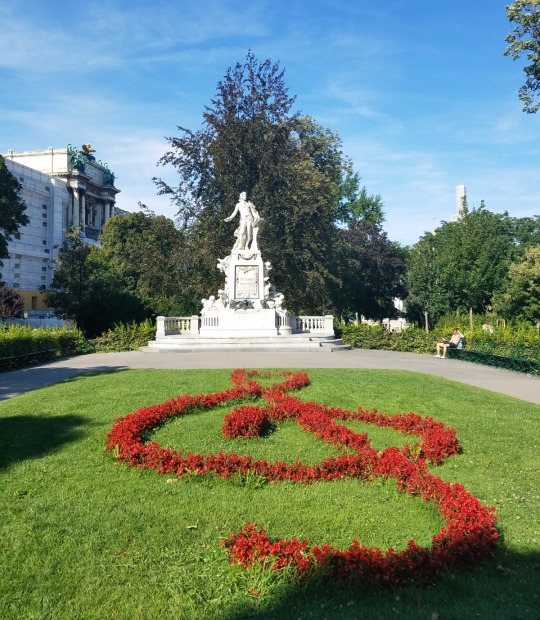
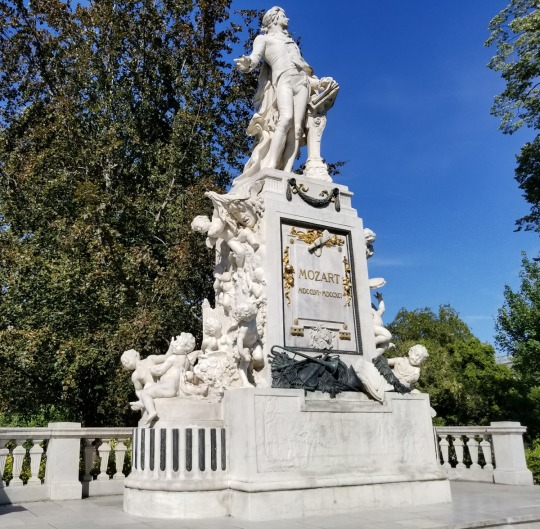
We also saw the Sacher Café and Hotel, home of the world-famous Sachertorte (a crumbly chocolate cake with apricot filling and dark chocolate icing) and a rabbit-crested wiener shack where we would enjoy some delicious food in the next few days.
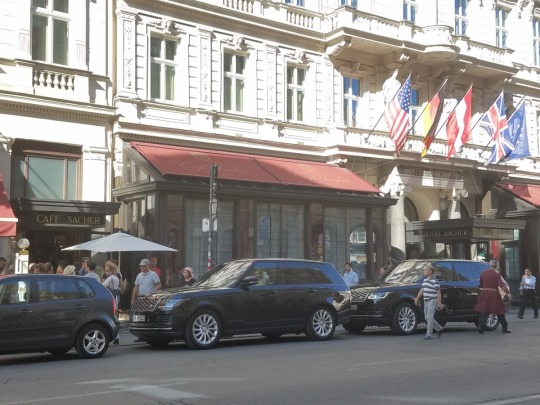
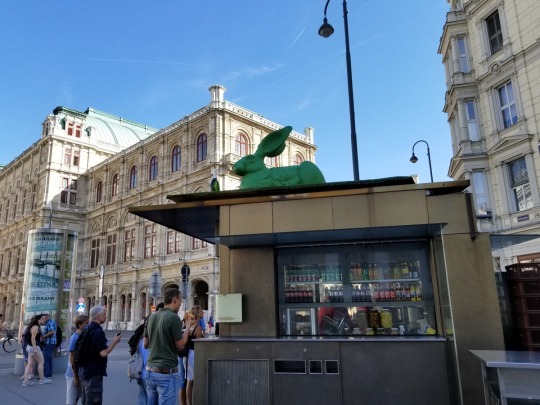
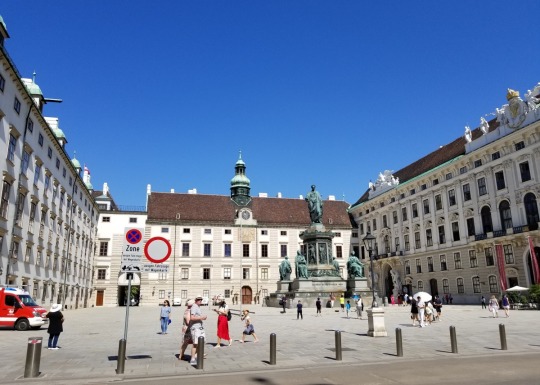
The next day, we visited the Hofburg Treasury and the Imperial Museum of Fine Arts.
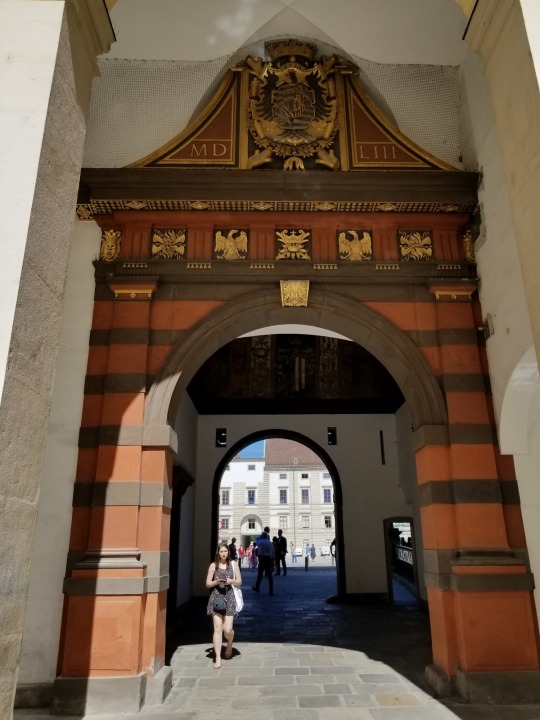
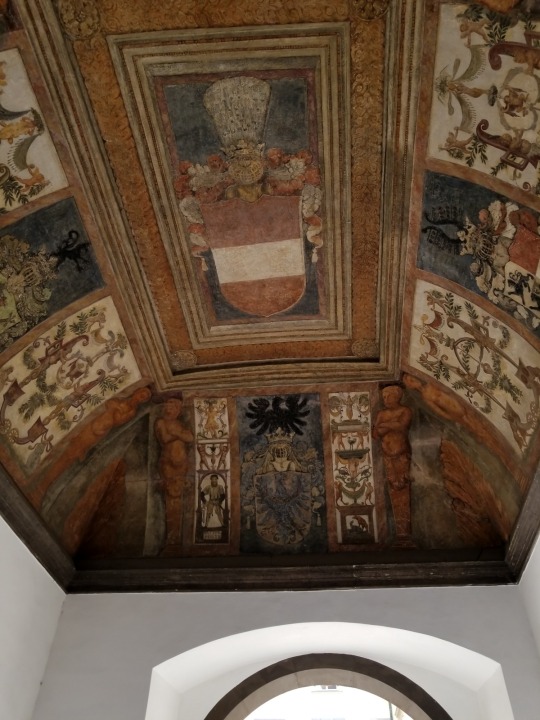
Back at the Hofburg complex, we made our way to a side courtyard--which could have been the central square of a major palace in its own right--then through an ornate red portal into a smaller but still sizeable courtyard that lead to the treasury.

The treasury tells a bit more of the history of the Habsburg dynasty, but mainly with regard to the coronations of various Habsburg rulers. Room after room are filled with their crowns, robes, orbs, scepters, and other regalia.
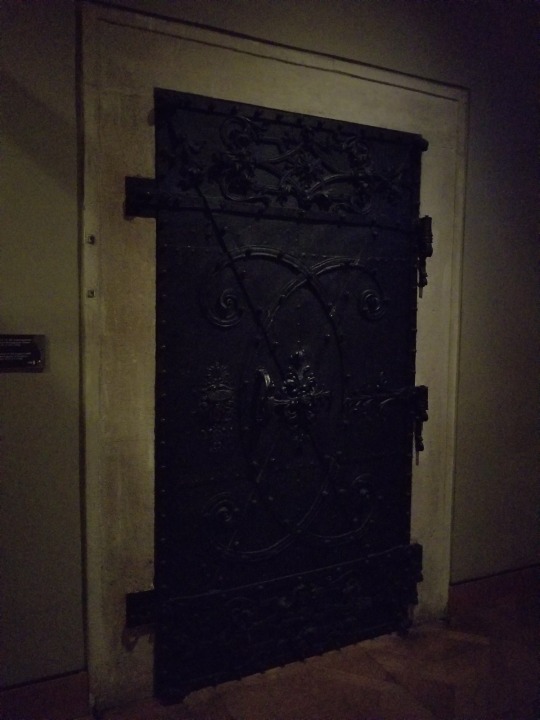
And Treasury isn’t just a fanciful name. When you enter, you can see the original iron door that lead into it in earlier centuries.
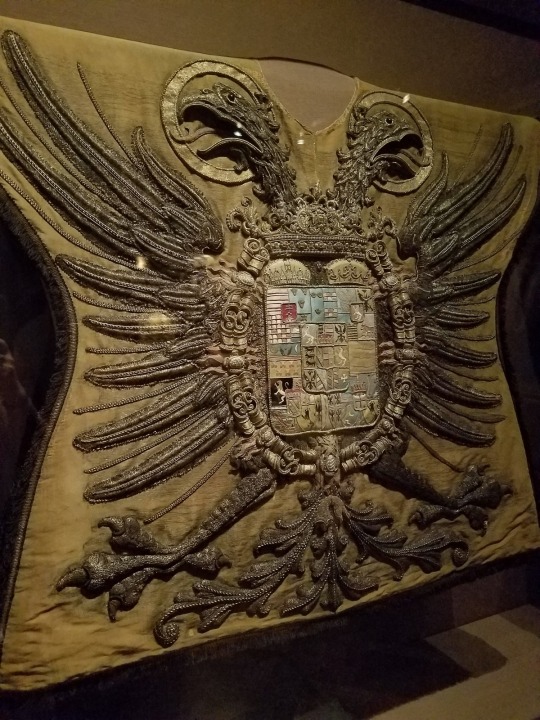
We did learn why the Habsburgs were so intent on holding onto Prague and the rest of Bohemia. According to the medieval rules of the Holy Roman Empire, emperors were elected by a council of nine individuals--three arch-bishops and six prince-electors.
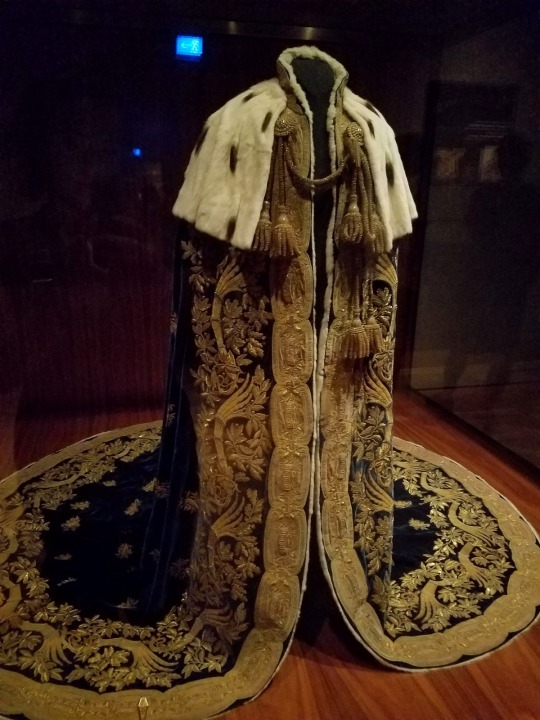
Like the Medicis in Florence, the Habsburgs didn’t hold any official authority over the election of rulers, so they had to rely on politics, manipulation, and sheer wealth to exert their will.

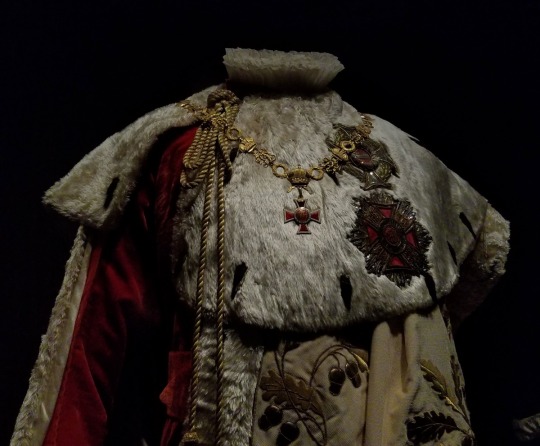
But one of the six prince-electors was the king of Bohemia--the Habsburgs’ next-door neighbor. So when the Habsburgs incorporated Bohemia into their territories, they gained an official seat at the table. And from then on, all but one of the elected Holy Roman Emperors were Habsburgs.
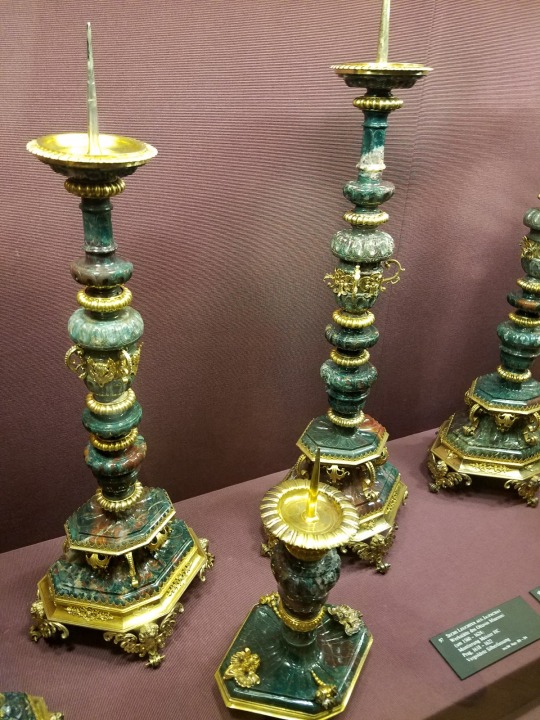
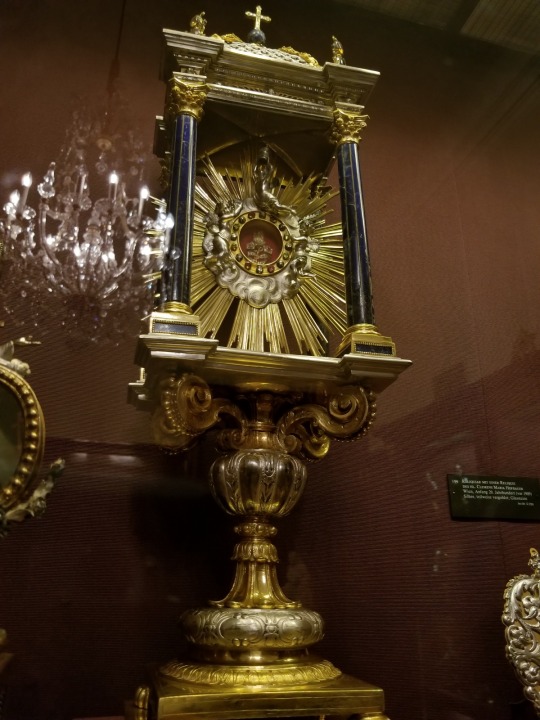
The Habsburgs were also deeply religious, and the treasury includes a numbingly large display of altarpieces, reliquaries, and other religious art. Nearly all of it is made of gold, ivory, jade, amber or amber and encrusted with gemstones.
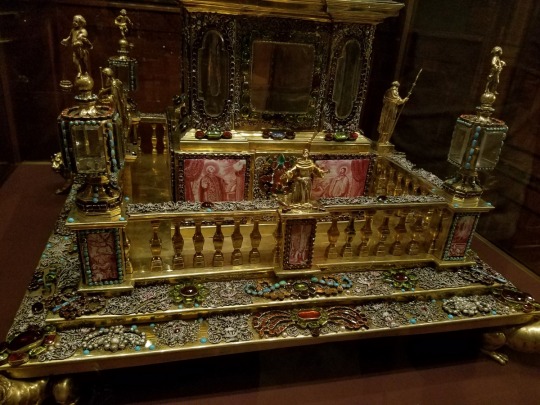
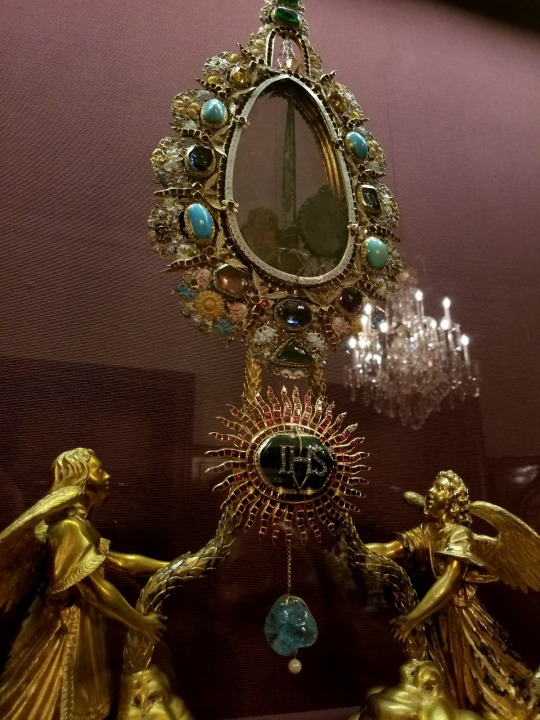
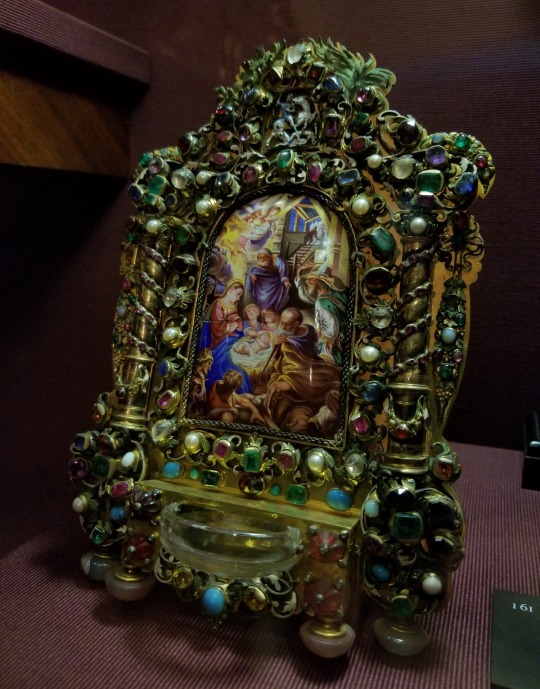
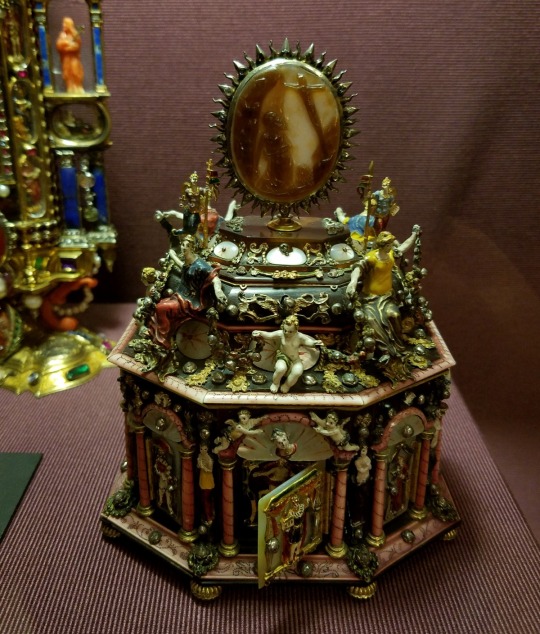
Even the whips they used to scourge themselves for penance were luxurious.

And because the Habsburgs made sure to marry into the royal families of any kingdoms they didn’t directly control, their collection includes artifacts from all across Europe and even from the Americas.
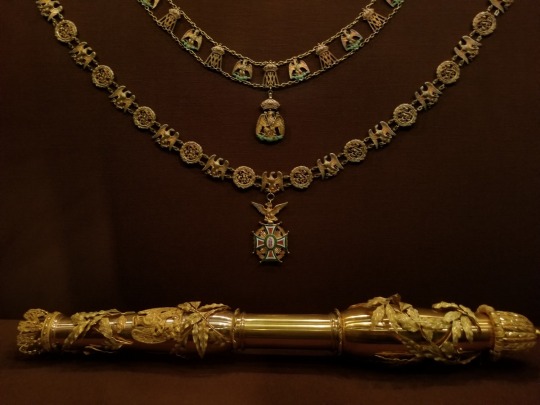
For example, Napoleon’s second wife was a Habsburg, and the treasury includes a number of Napoleonic artifacts, such as a ridiculously fancy crib used by their son Prince Napoleon II.

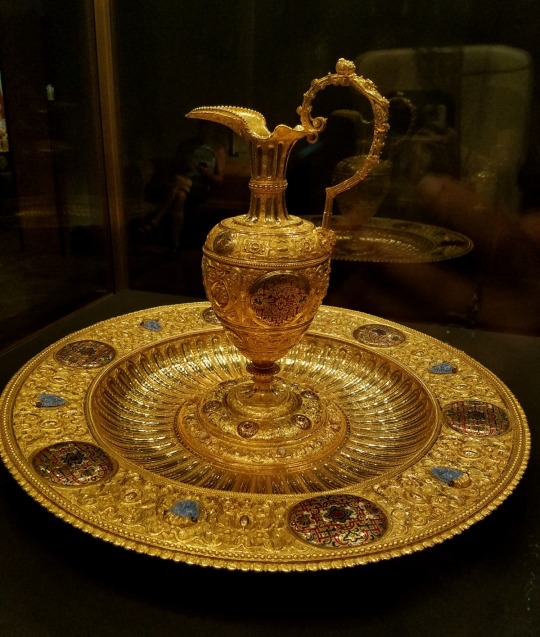
The treasury also holds a staggering collection of gemstones and jewelry, including gilded flower vases, a giant aquamarine, and a wall full of opal necklaces, earrings, and hairpins.
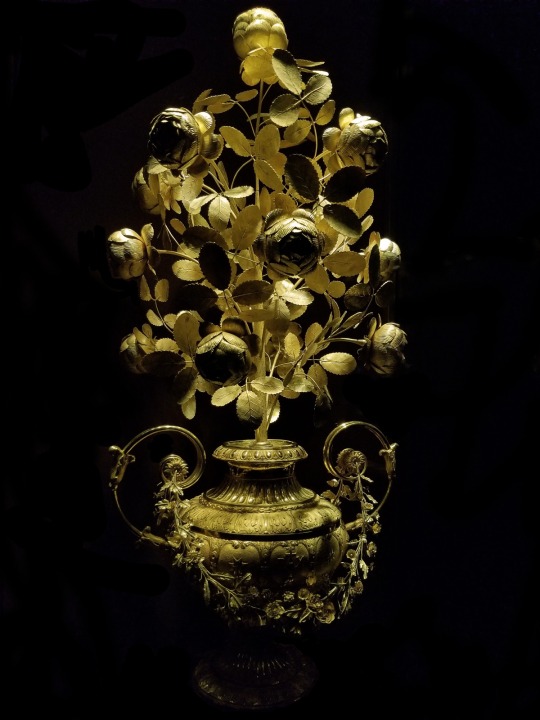
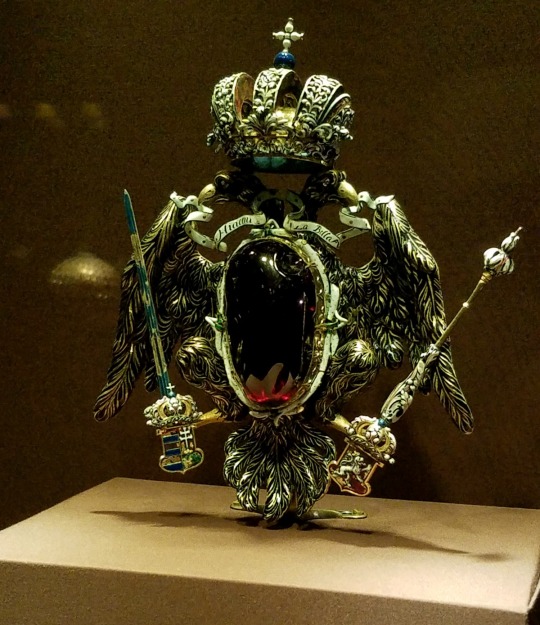
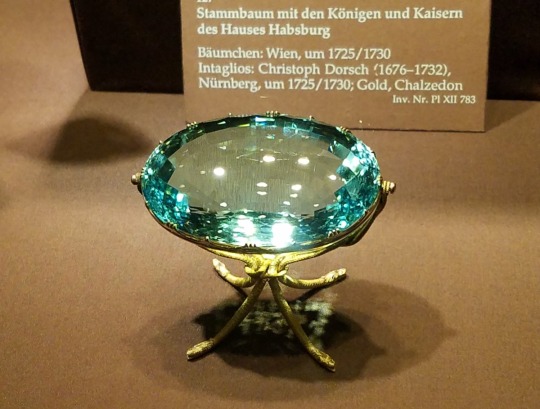
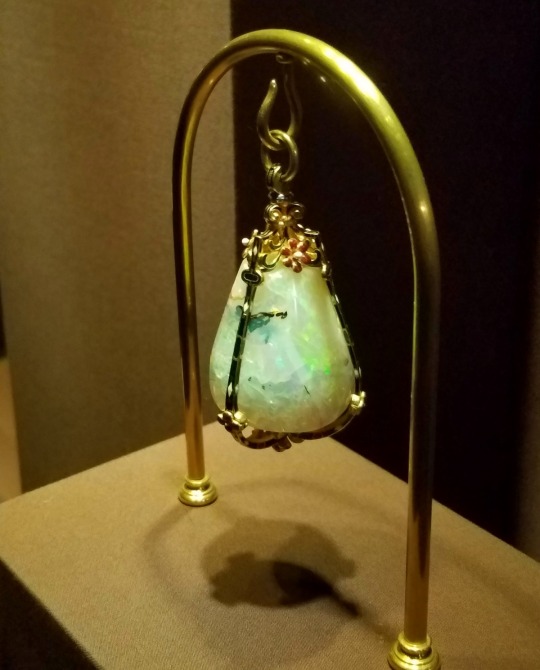
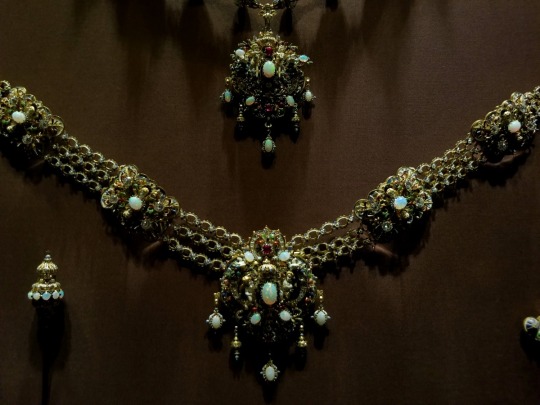

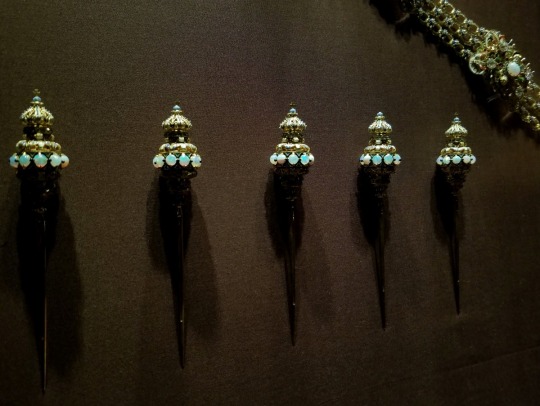
There's even a lidded cosmetics box carved out of a massive 1.3 pound emerald.
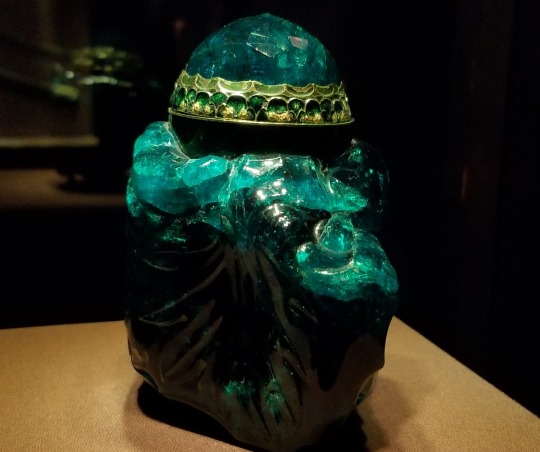
Near the end of the treasury, we saw some of the Habsburgs' most precious relics: the spear that pierced Jesus's side on the cross, a forearm-sized fragment of the cross, and gem-encrusted saber that belonged to Charlemagne--the man who united the lands that would later become the Holy Roman Empire.
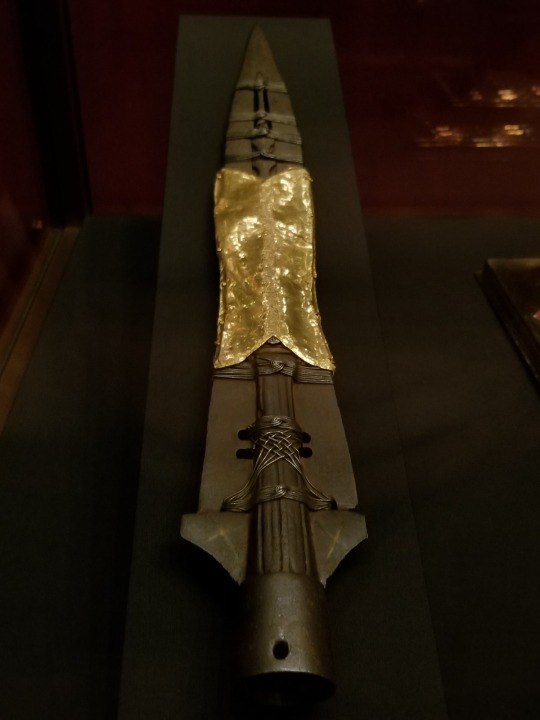
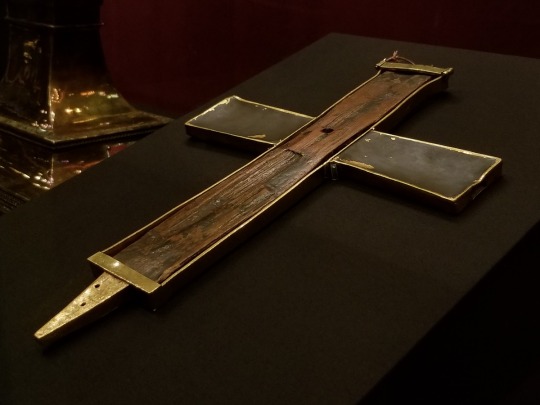
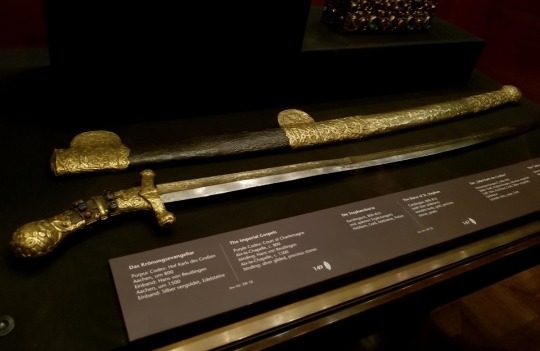
None of it's real, of course, but that's beside the point.
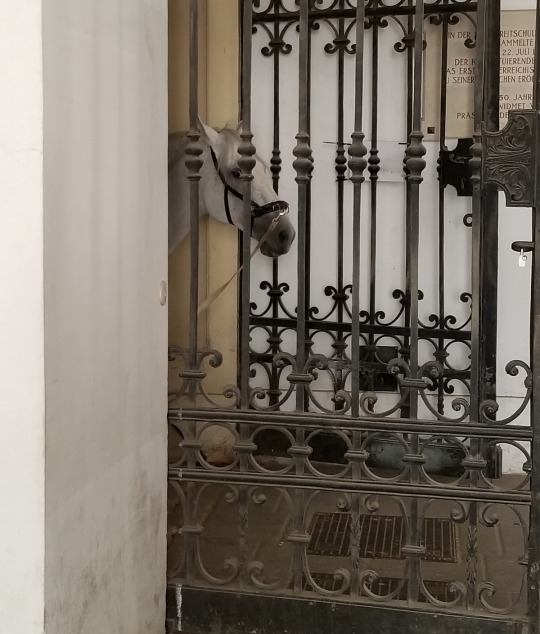
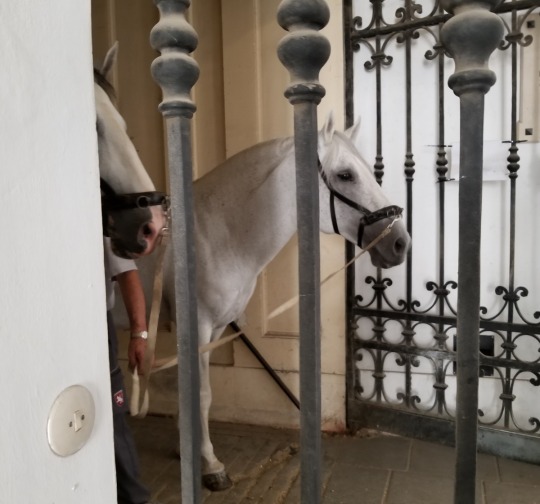
After the treasury, we left the Hofburg to get some lunch at the nearby sausage stand. Along the way, though, we ran into a group of horses that were being moved from the Royal Stables. You have to pay extra to visit the stables, but we got to see them for free right on the street.

The sausages were fantastic. It may not look like much, but this pairing of simple bread and meat, anointed with a squirt of curry ketchup, is a true culinary and cultural masterpiece.
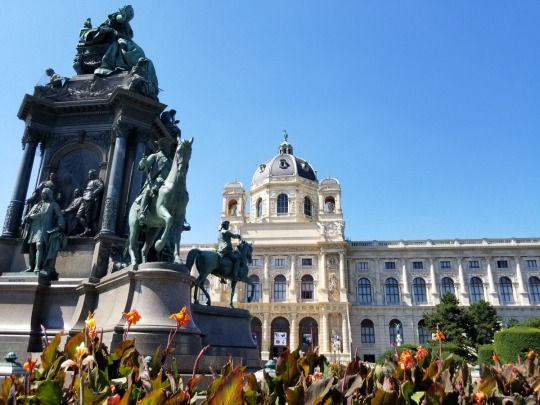
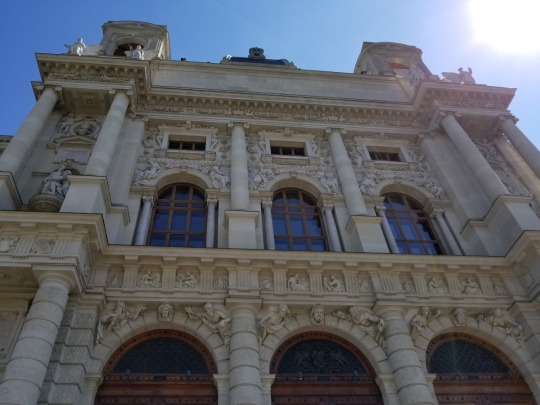
Anyway, after that brief diversion, we headed over to the Museum of Art History (officially known as the Kunsthistorisches Museum) just across the street from the Hofburg. If the treasury had upped the ante from the silver collection, this museum changed the game entirely.
Many of the world's great museums started as royal palaces or noble estates, but this museum was purpose-built by Emperor Franz Josef I as a palace for his family’s vast collection of art. And its grandeur could rival the palace of any king or emperor.
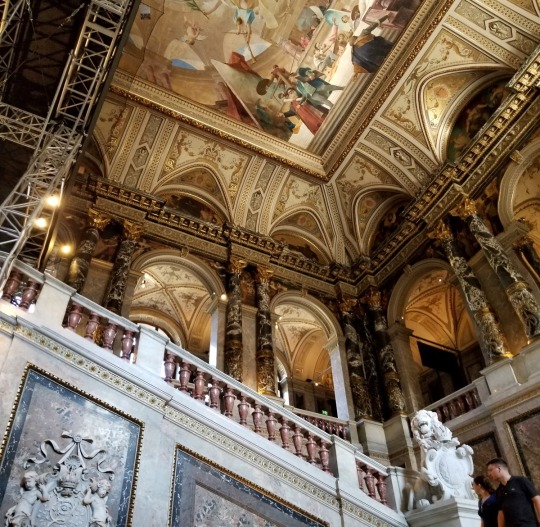
The top floor holds the museum’s painting collection while the ground floor houses statues and other artifacts. We started with the ground floor.
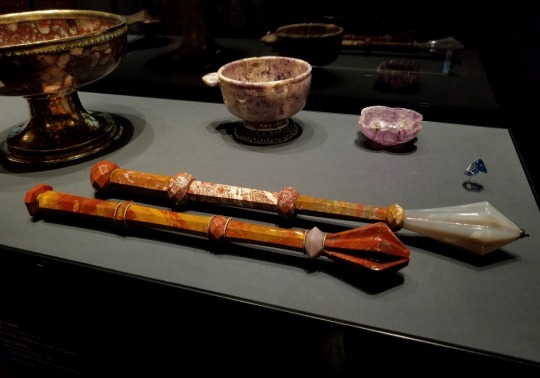
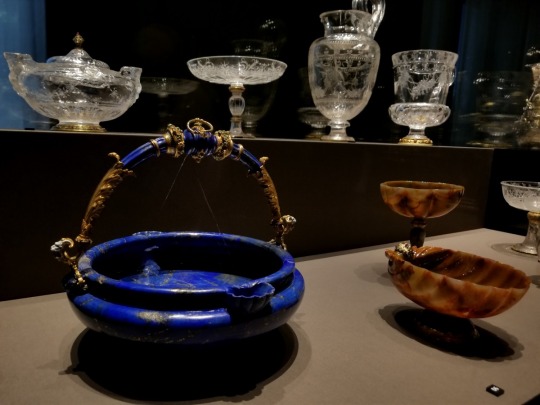
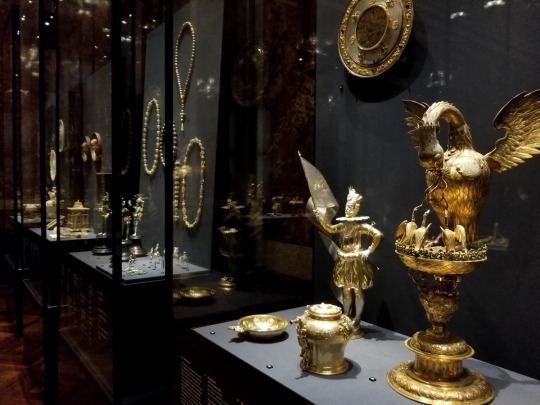
As Jessica put it, we’d never felt so pathetically poor in all of our lives. Not even at St. Peter’s Basilica in Rome or in Versailles. Not even close.

This is a golden centerpiece for holding salt and pepper.
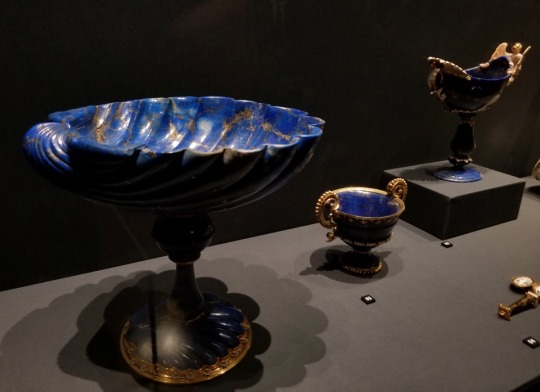
This is a basin made of solid lapis lazuli--a stone so precious that a few grams ground into pigment might be worth more than all of a Renaissance artist’s other supplies combined.

This is part of a set of gold and mother-of-pearl cups that constituted a measurable percentage of the empire’s wealth when they were made.
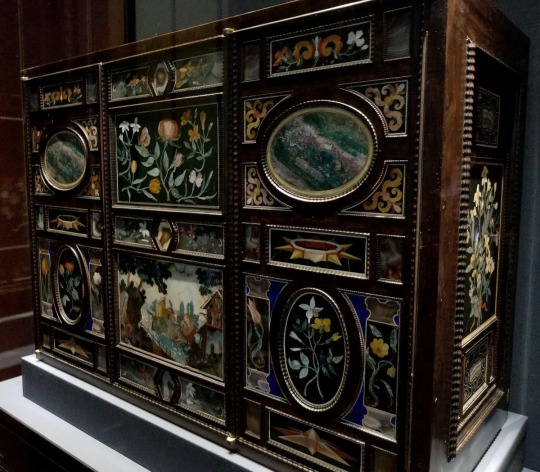
See this lovely painted chest? Look closer.
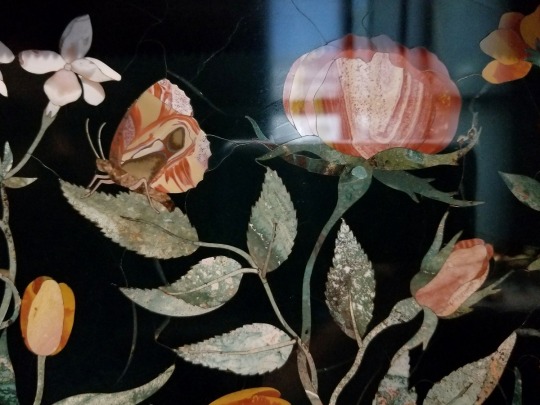
Those aren’t paintings--they’re mosaics crafted from painstakingly selected precious stones.
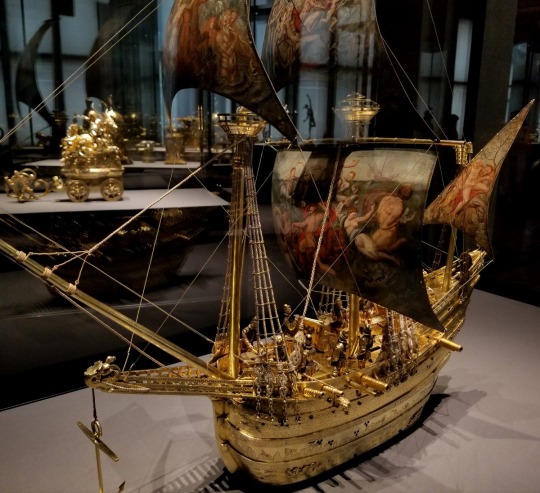
This is a gilded automaton shaped like a boat. It propels itself on hidden wheels, the drummer drums, the horn-blowers raise and lower their horns, and the cannons actually fire in small puffs of black-powder. It was made in the 1500s.
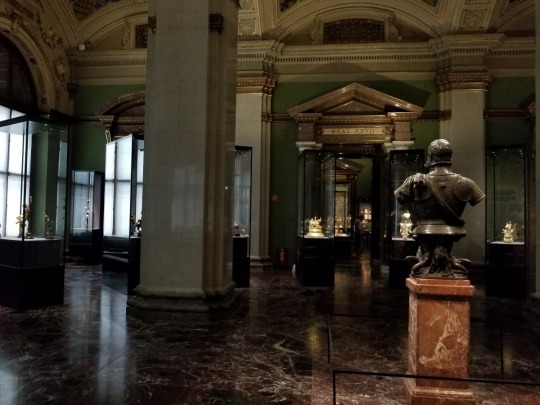
This is a room filled with similar automata, which were made as entertaining symbols of the empire’s technological dominance.
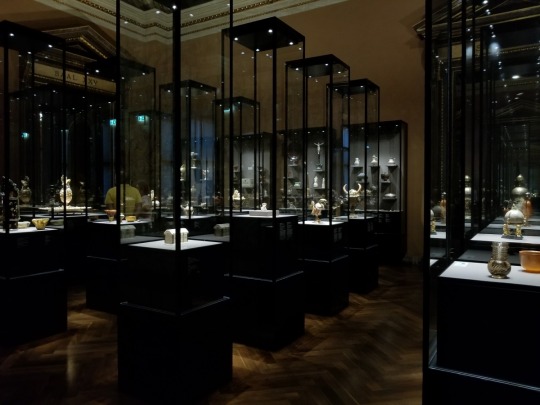
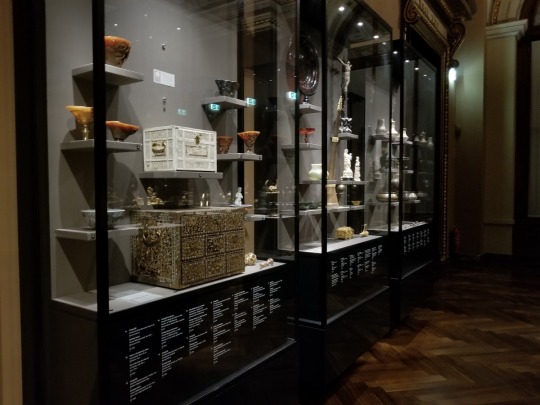
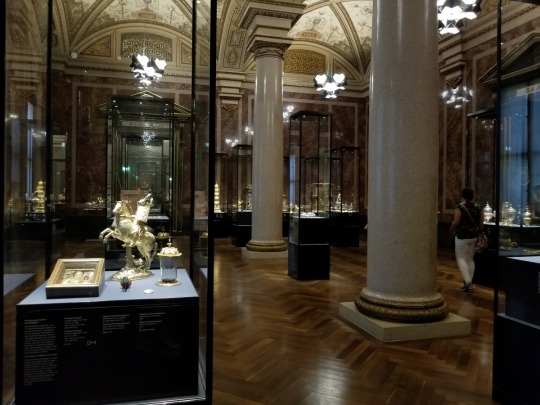
Again and again, we saw all these artifacts that--if there had been only one or two of each--would have constituted a delightfully enchanting collection. But practically piled up as they were, they somehow became less impressive and more offensive.
Early on in the museum, Jessica and I started to joke about how we hated the Habsburgs. But by the end of this exhibit, the feeling had started to become genuine.
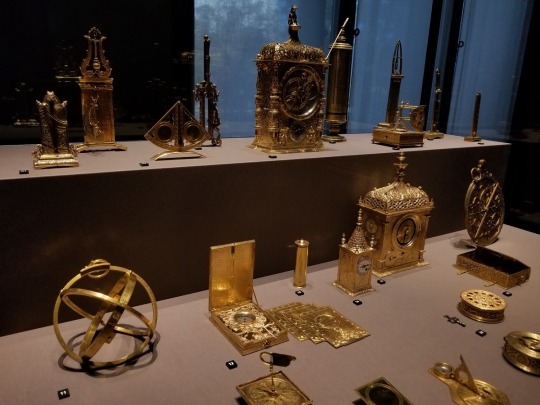
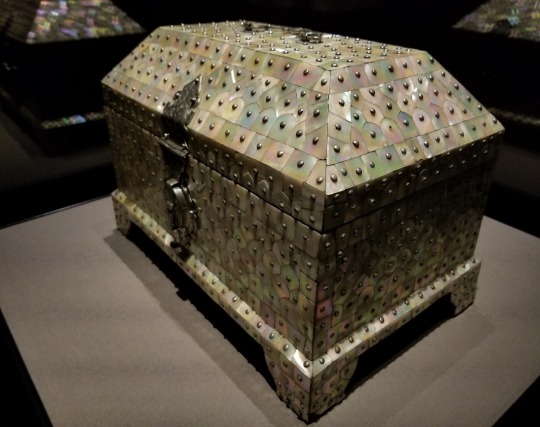
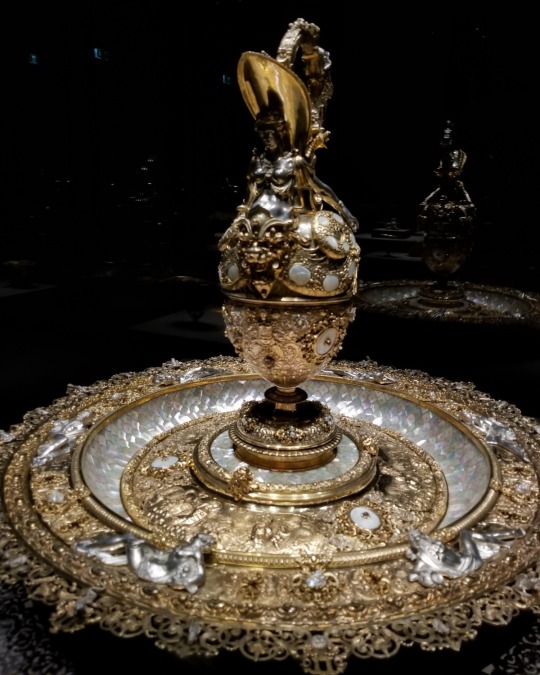
At least as we walked through the extravagances of St. Peter’s Basilica or Versailles, we could tell that they were built for a purpose--to stand as a physical embodiment of an ideal or edifice. Sure, they represent a fabulously unfair distribution of wealth between the commoners and the elite, but at least they stood for something. Walking through them felt like walking through history.
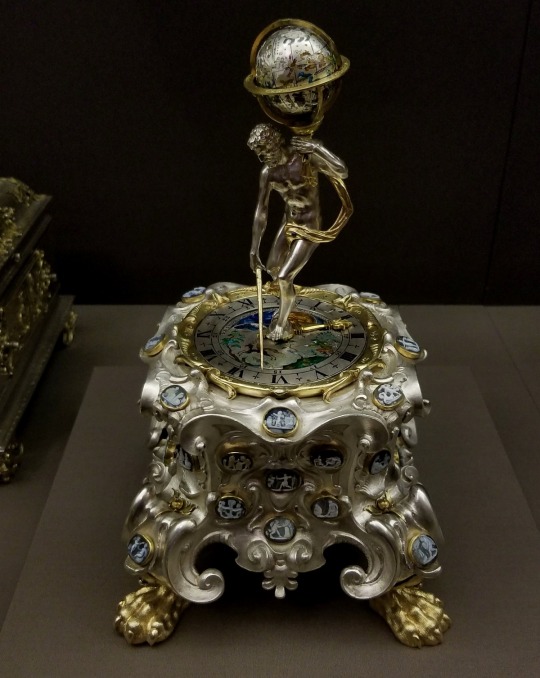
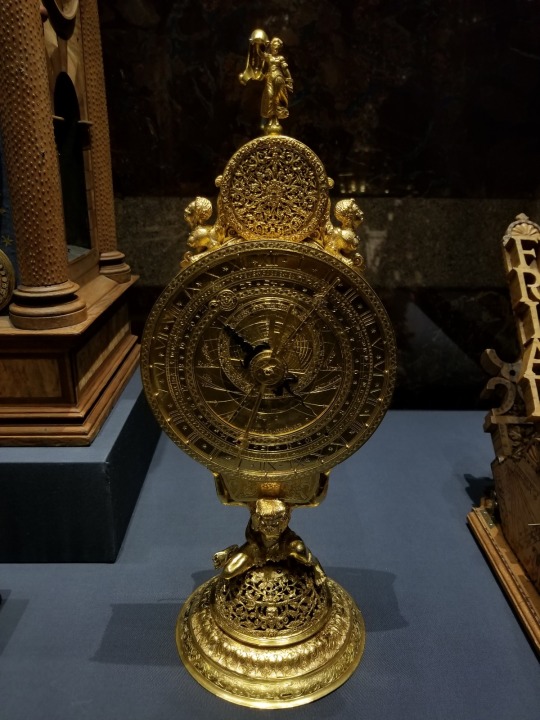
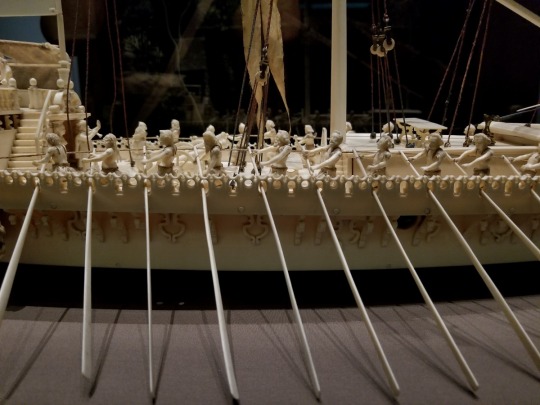
Walking through the Habsburg collection felt like walking through the discarded toys of privileged rich children. All those gilded and bejeweled knickknacks seemed to represent nothing more than obscene wealth mixed with insecurity and boredom. They feel made to amuse and impress an audience once or twice, then put away forever. Until they were put on display in the twilight years of the empire, I doubt many of them had even been enjoyed or appreciated by anyone in ages.
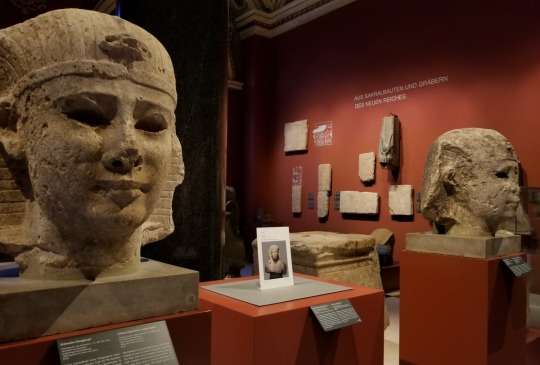
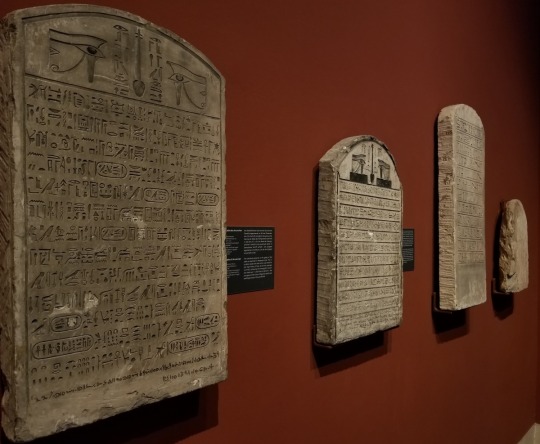

Much more enjoyable was the museum’s collection of Egyptian artifacts, which included sarcophagi, etched tablets, and even surviving pieces of an Egyptian book of the dead.
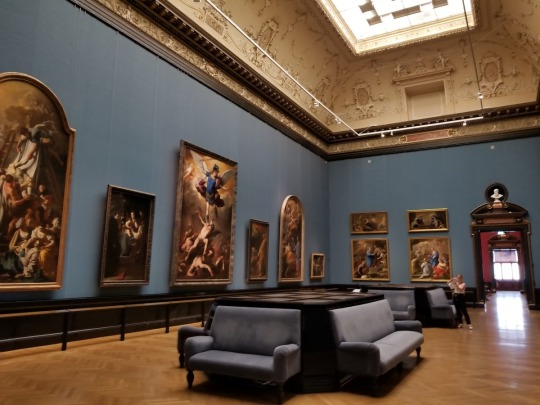
And the painting collection on the upper floor was also suitably impressive, but we were too tired and overwhelmed at that point to give it the appreciation it no-doubt deserved. We did get to see some extremely famous paintings, however, including Pieter Bruegel's Tower of Babel and a dramatic landscape by Peter Paul Rubens.
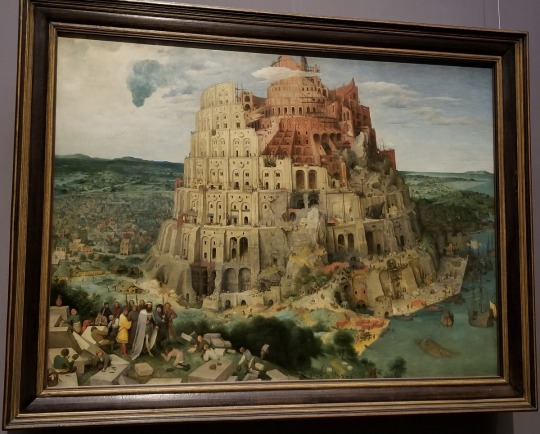

The next day, we made our last Hofburg stop at the New Palace Collections, which include the imperial armory and (tragically closed for renovation) musical instrument collection.
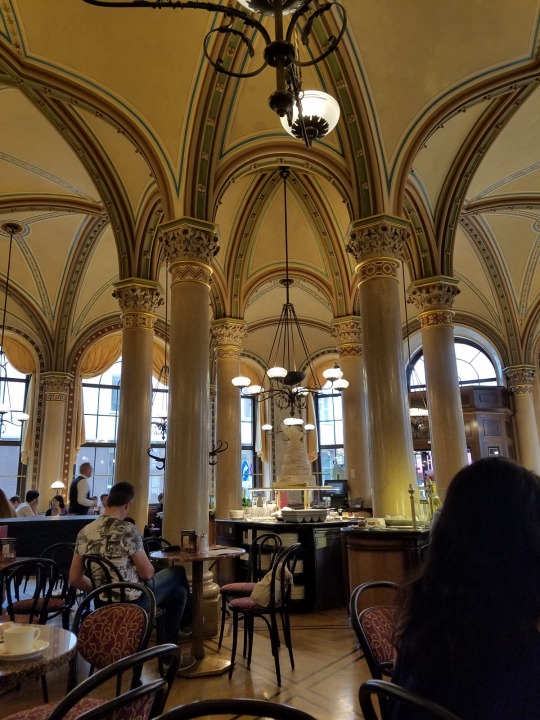
But first, we breakfasted at Café Central--a gorgeous 19th-century café where some of the most famous and infamous intellectuals of the time sipped coffee and discussed their theories. Sigmund Freud and Leon Trotsky were regulars, as was a young aspiring artist named Adolf Hitler.
Jessica and I both had kaffee verkehrt--basically Austrian latte macchiatos. They were excellent, and we found the waiters to be perfectly hospitable despite their reputation for grumpiness. Their odd combination of cheerful smiles and shamelessly blunt comments felt charmingly Austrian.
We also had scrambled eggs and ham served in a cast-iron pan, and they may have been the best eggs we'd ever had in our lives. Feeling indulgent, we ended our breakfast with a slice of sachertorte, which was delicious but also a bit dry--as is tradition, apparently.
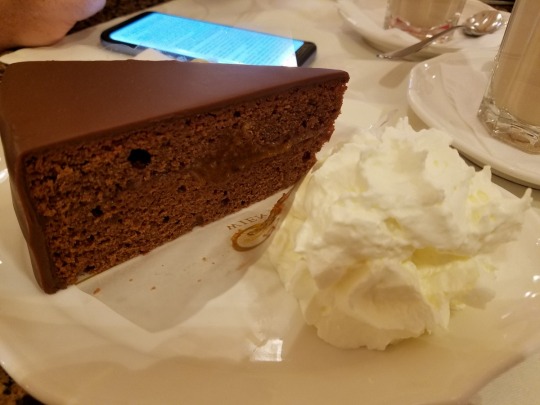
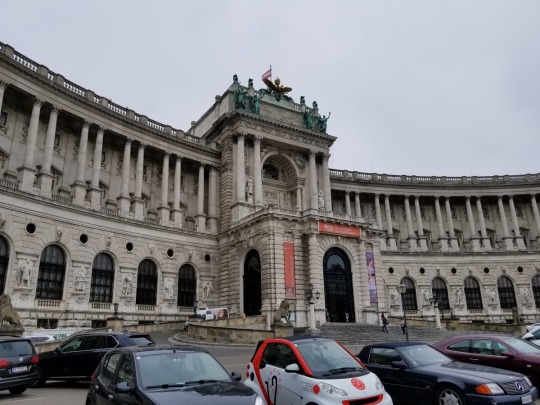
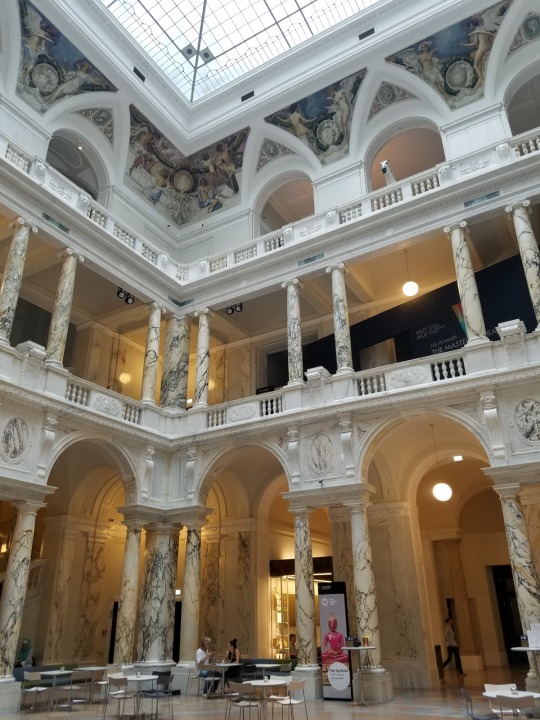
Even with one of the two exhibits we wanted to see closed--and despite the building being unusually hot inside--our visit to the New Palace Collections was well worth it. The armory takes up nearly the entire top floor of the museum and holds a massive collection of arms and armor--both practical and ceremonial.
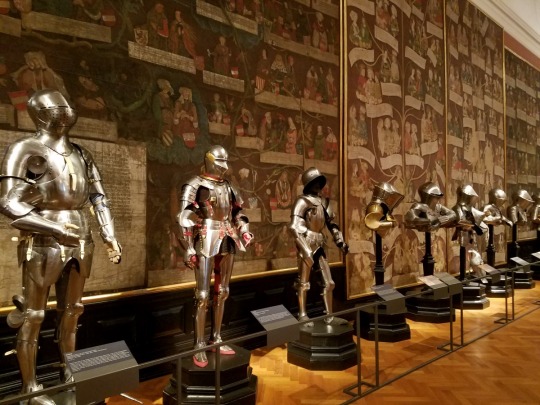
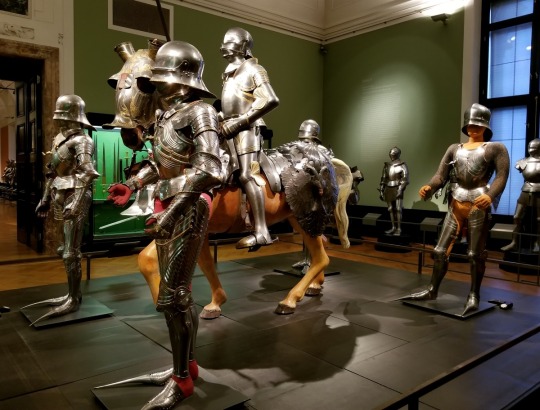
And best of all, we could take all the pictures we wanted.
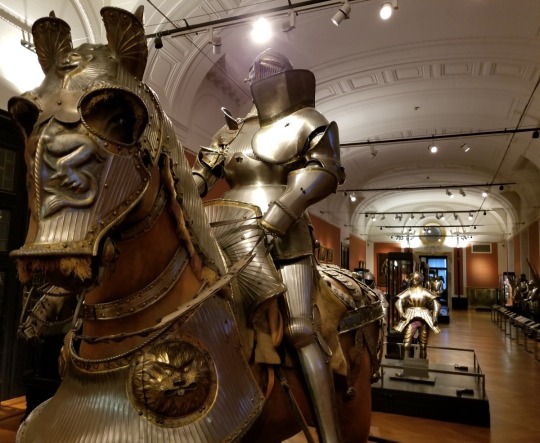
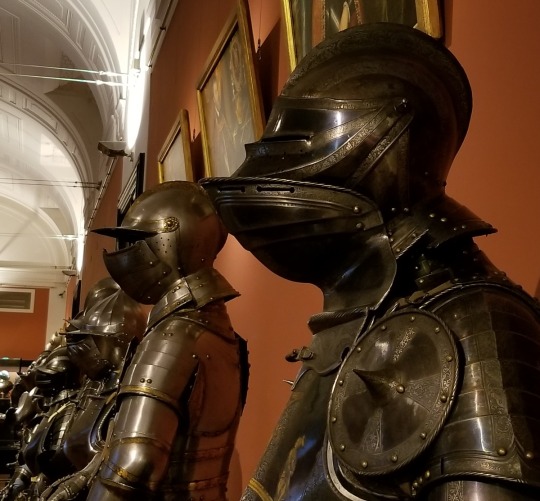
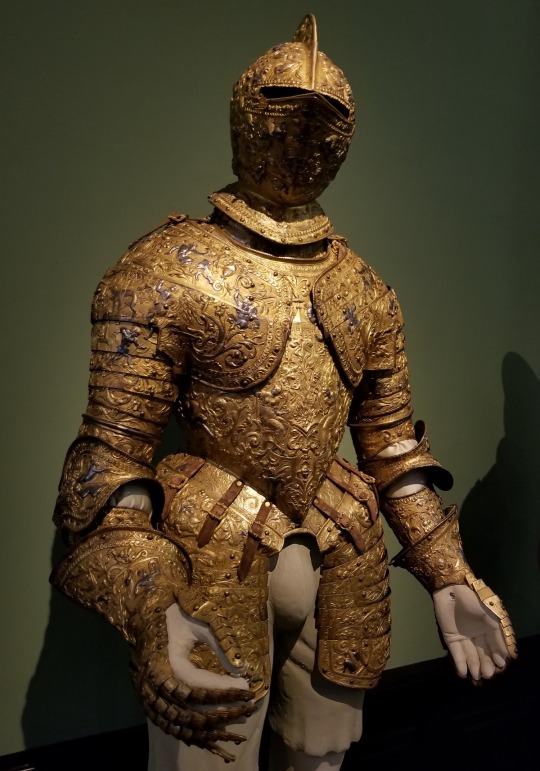
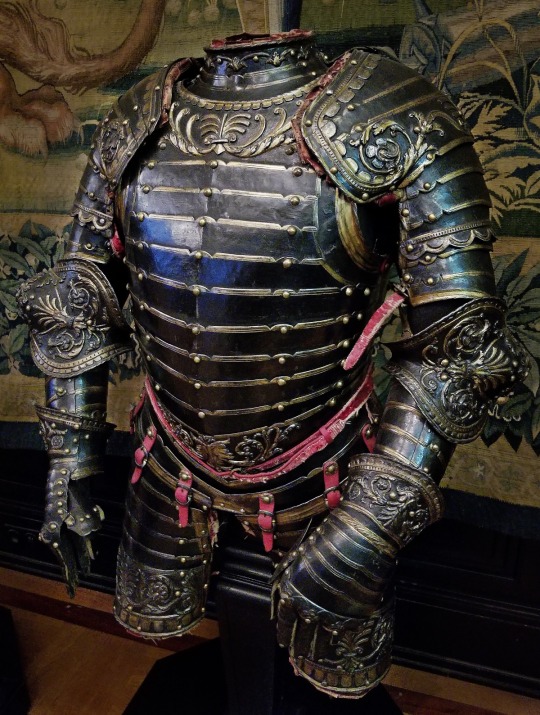
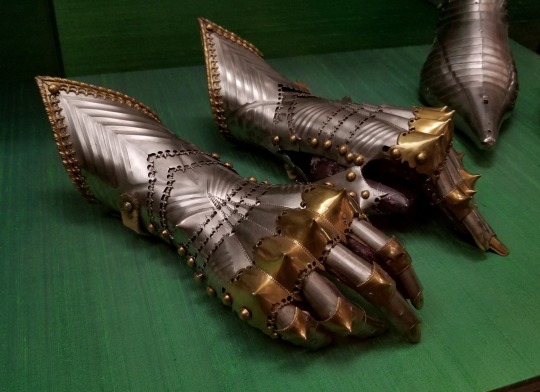
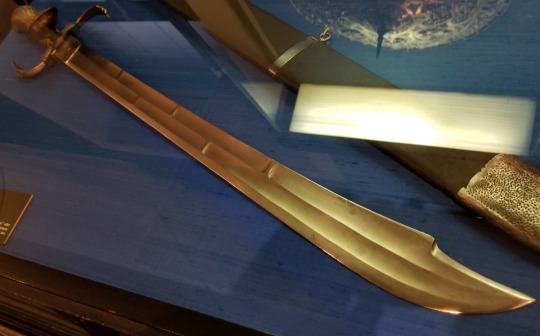
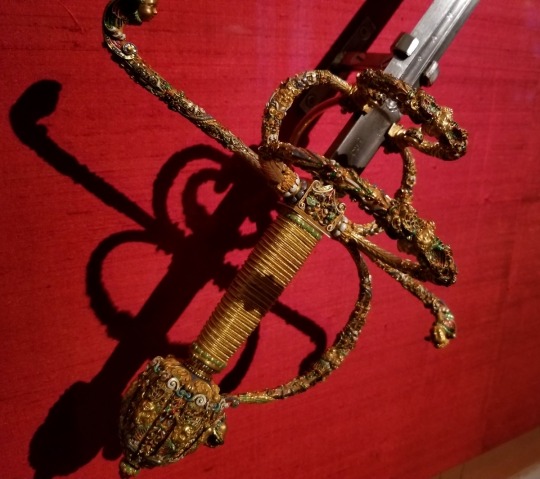
There was hardly any other visitors in the armory besides us. The floors creaked loudly wherever we went, and extremely sensitive motion detectors kept going off whenever I got close to take pictures--summoning each time a docent who had perfected the look of "I'm not mad, just disappointed."
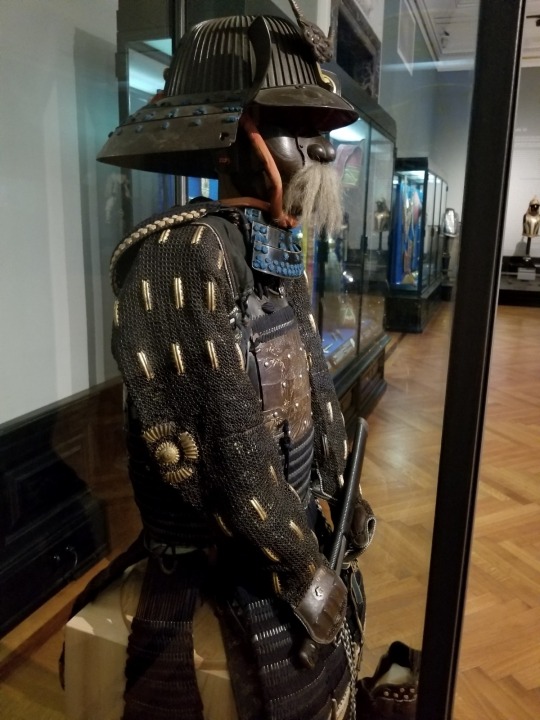
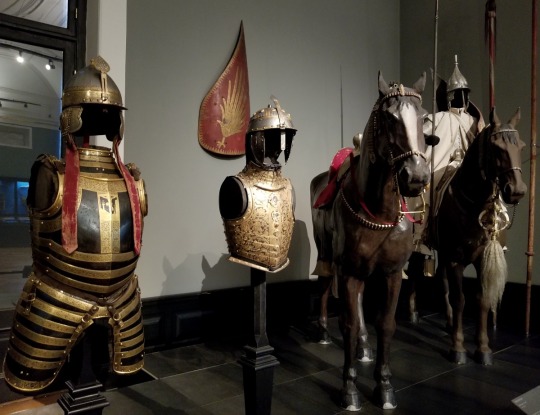
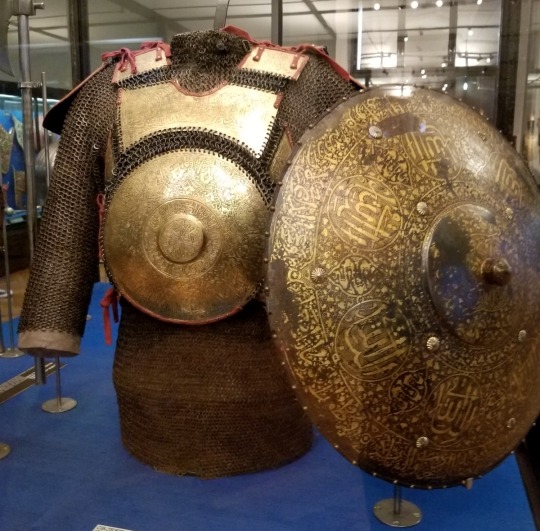
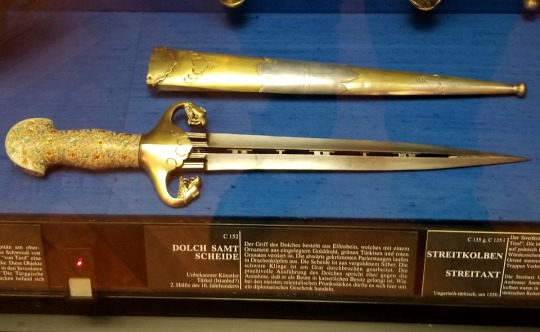
There was a collection of foreign arms and armor that the Habsburgs collected during their reign, and a small case of especially wicked-looking gear.

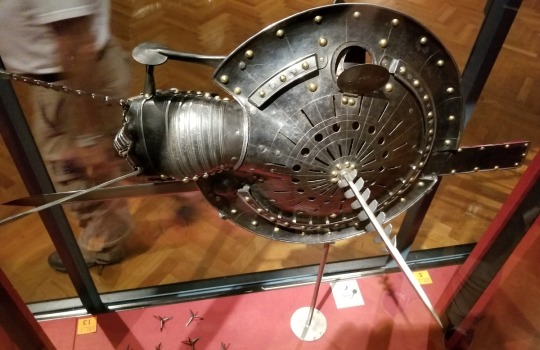
And Jessica found a collection of early modern emoji helmets
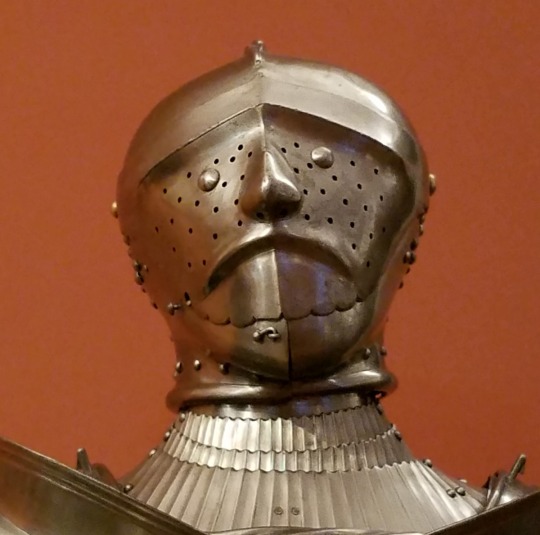
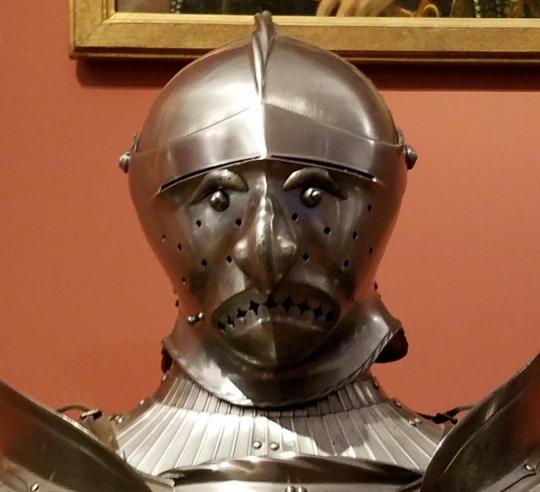
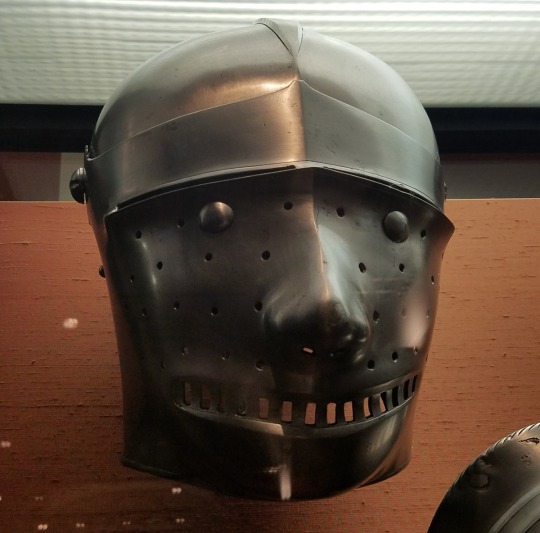
As we wandered on our own, taking pictures and admiring the armor, I was able to catch a glimpse into the closed musical instrument collection, which was closed off in a corner of the floor.
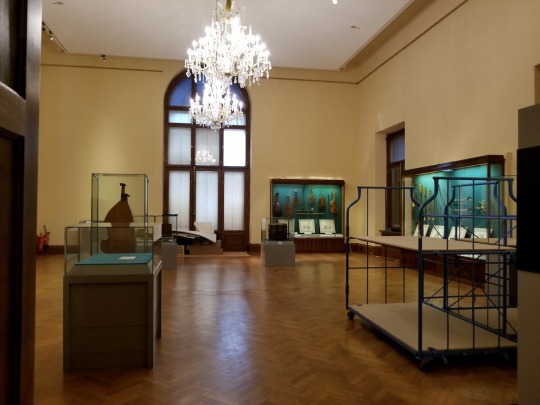
Last but not least, we found a collection of spectacularly decorative firearms tucked away in a corner of the central atrium.

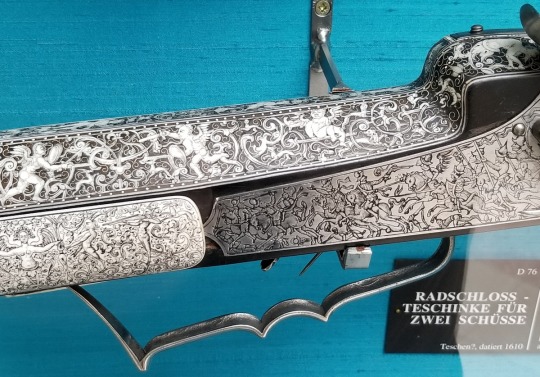
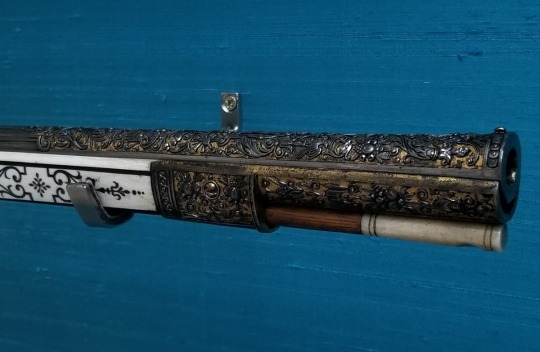
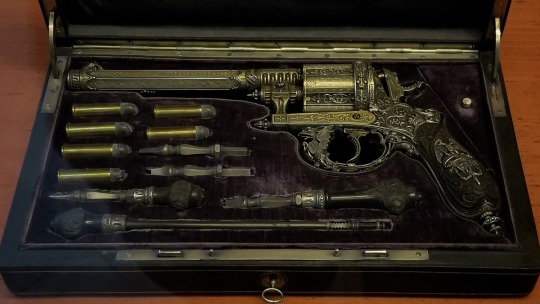
From what we gather, they look better than they ever actually worked.
One level down, we peeked into a collection of artifacts celebrating world cultures--particularly those affected by European colonialism. We were pleasantly surprised by the size and tasteful presentation of the collections, and we ended up walking around the entire thing.
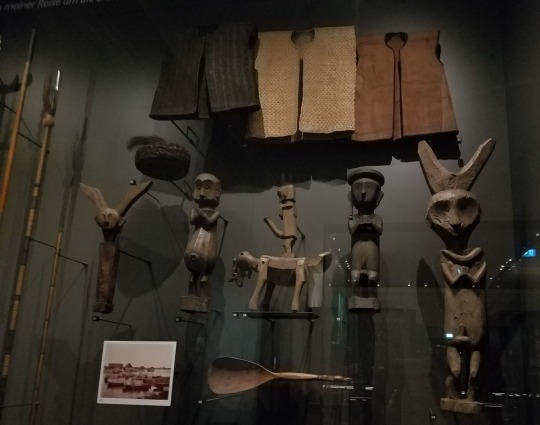
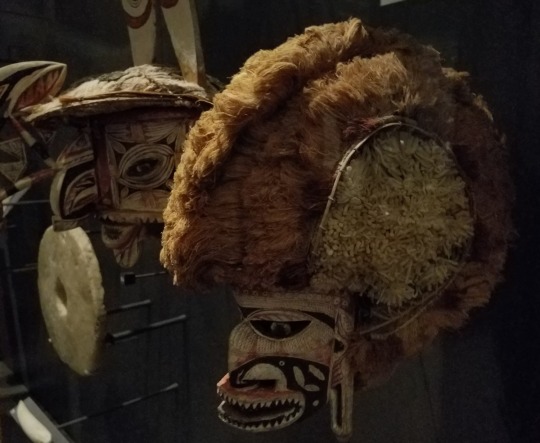
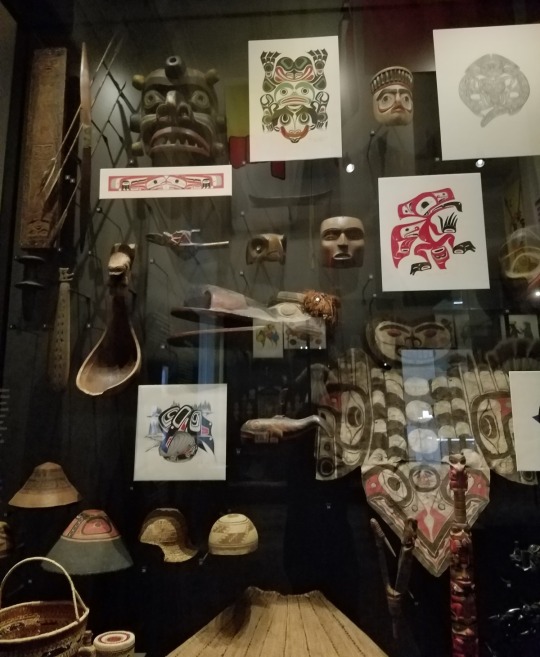
There are pieces from across the world, including the Americas, Africa, Arabia, Australia, the Pacific islands, and even Japan and China.
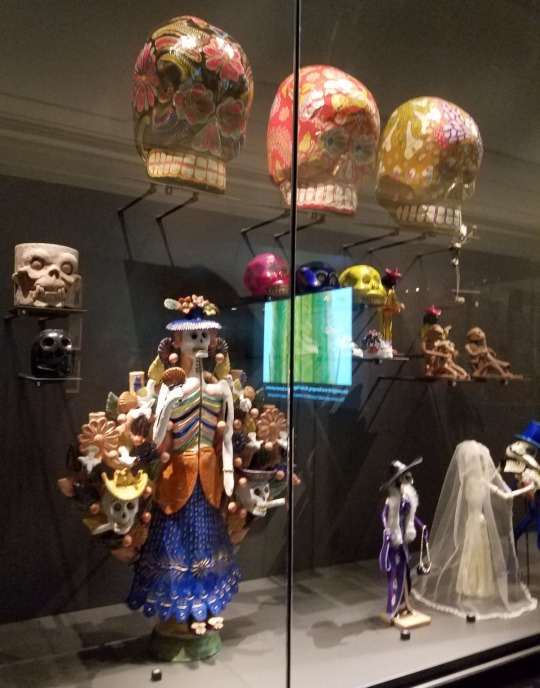
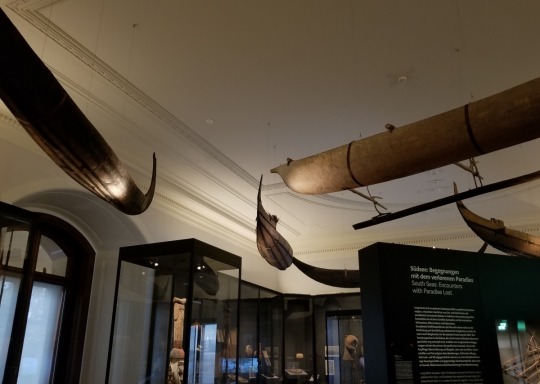
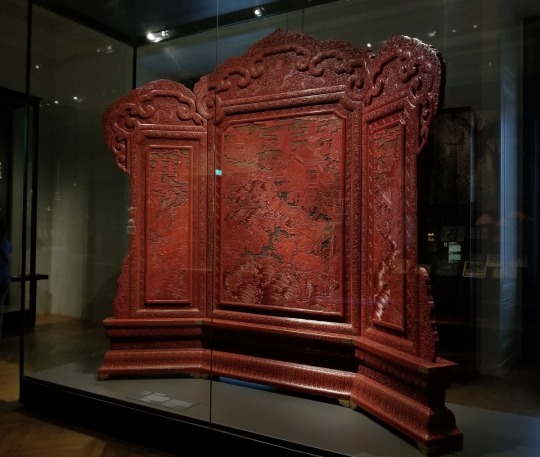
And our native Bay Area, apparently.

For the most part, the collection seems to do a good job of contextualizing the collection in a non-Eurocentric way. It does tend to gloss over the harsher elements of how Europeans affected these cultures for the worse, but I think that can be excused in the name of focusing on the cultures themselves.

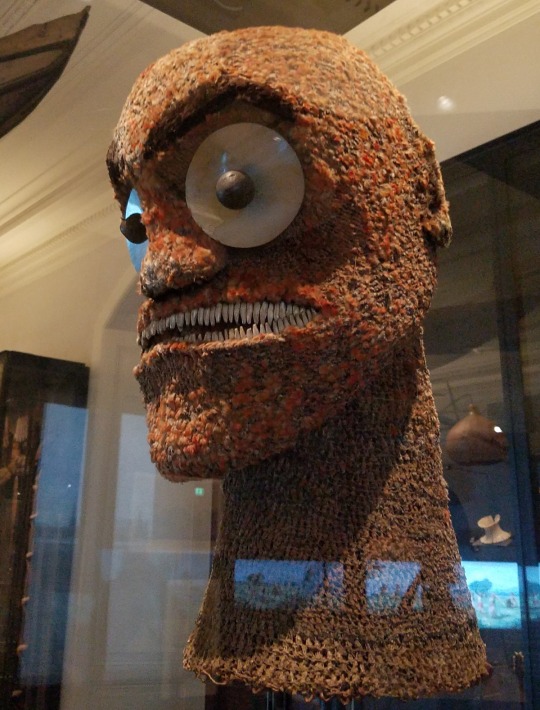
Besides the Warriors cap, the highlight of the collection was a delightfully creep Hawaiian war mask made of feathers, seashells, and dog teeth.
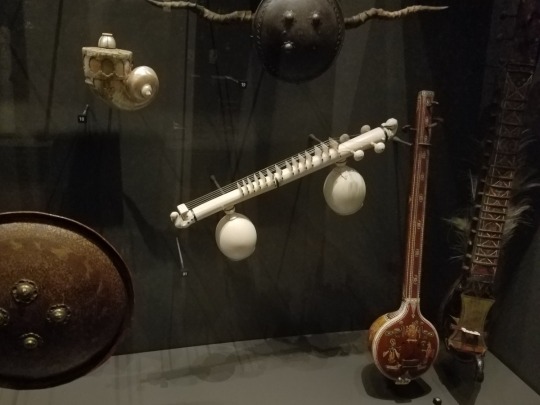
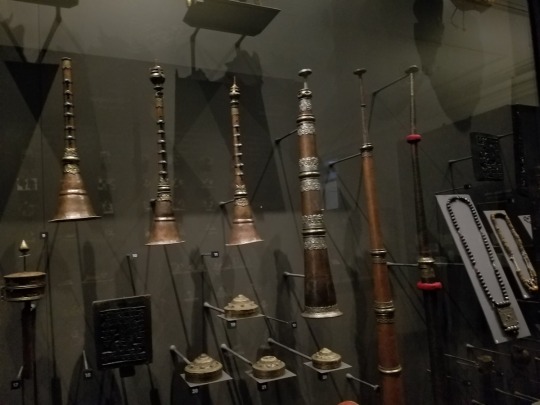
And we got to see some musical instruments, after all.
Overall, the imperial complex in Vienna is suitably impressive--one of very few sites we’ve seen that truly lived up to their reputation in that regard--but I have to say that it mostly rang hollow for us. The more serious museums are impressive, but they feel relegated to the fringe--filling out rooms that only the most curious travelers peek into.
To us, the main exhibits of the Hofburg amounted to little more than a puffed-up ostentation of wealth and a rose-tinted reflection on the twilight years of a dusty empire that had long-since outlived its era.
At this point, you might think that we left with a poor impression of Vienna, but that's absolutely incorrect. We loved Vienna--it’s architecture, it’s wealth of art and culture, it’s refreshingly relaxed pace of life. It’s like being in Paris but without all the traffic.
And the coffee. I may still not have a well-developed taste for the stuff myself, but after making our first honest-to-goodness brewed coffee in months, Jessica was practically enraptured.
Along with Venice, Austria was one of the first cities in Europe to adopt coffee from the Middle East, and they have been refining it ever since. The drinks menus at the cafes we’ve visited here have all had a minimum of two pages dedicated just to different varieties of coffee.
At the Hofburg palace café, Jessica had enjoyed a melange--basically an Austrian cappuccino. I had a hot chocolate, which was easily one of the best I’ve ever had. It was somehow rich and mild at the same time. Nothing like the thick drinking chocolate that we had with churros in Madrid, this chocolate was light and milky in body yet possessing an intense flavor that seemed to fill my mouth with the smallest sip.
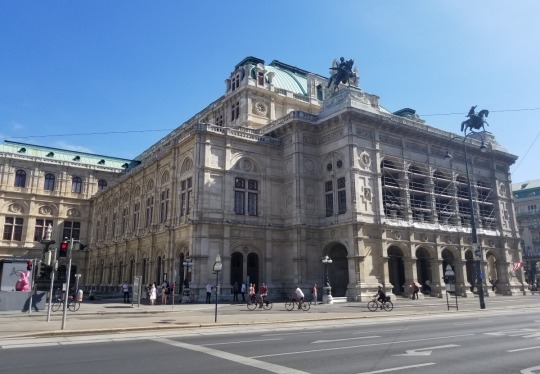
We got plenty of chances to admire the impressive Vienna State Opera house, which is right between the Hofburg and the metro stop, but we never actually went inside (except for two misguided minutes trying to browse the wildly overcrowded gift shop).
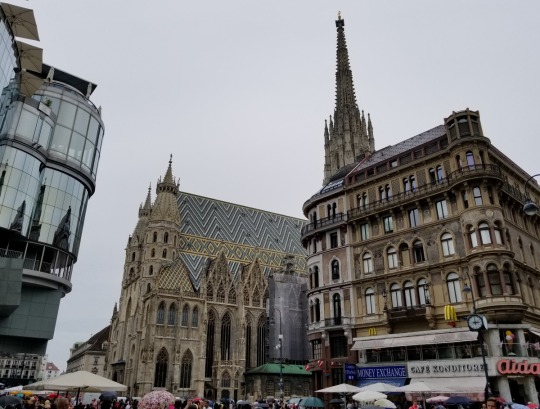

We also saw the even more impressive St. Stephen’s Cathedral, and that time we did go inside.
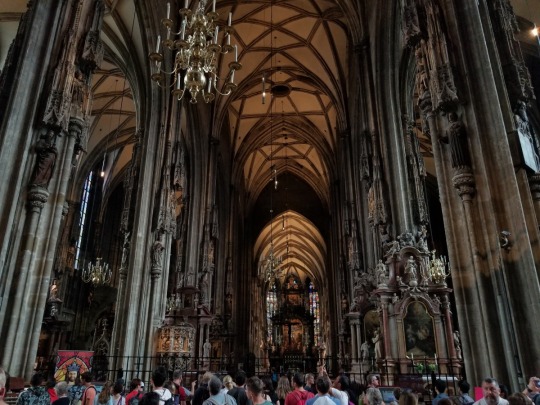
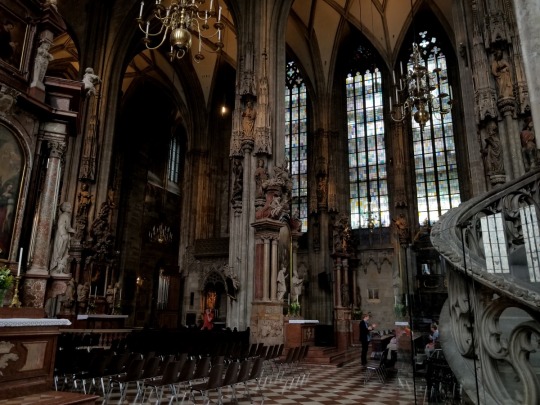
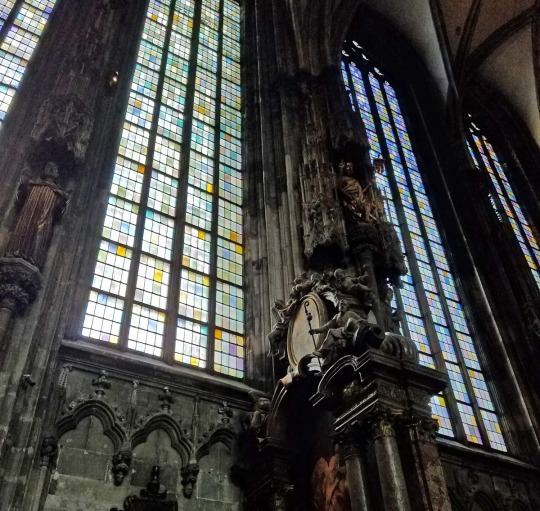
The patterned roof reminded us of the Burgundian roof tiles we saw in Beaune and Colmar. Which might make sense given that Burgundy used to be a Habsburg domain.
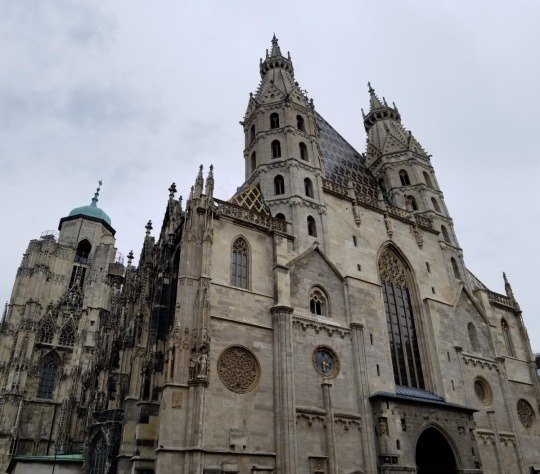
We also took the opportunity to exchange our Polish and Czech currency for Euros at a miserable rate from a nearby money-changer.
On our last day, we stayed in and planned most of the rest of our trip. It was surreal to think that there was only a month and a day left before we would be flying home.
Not to let a day go by without some form of drama, we forgot that it was Assumption Day, which is an actual holiday here in still-very-Catholic Austria. When we went out in the afternoon to go grocery shopping for dinner, everything in walking distance was closed.
So, naturally, we partook in the time-honored heathen tradition of going out for Chinese food.
Next Post: Salzburg & Berchtesgaden
Last Post: To Vienna
#180abroad#vienna#austria#travel#coffee#history#museums#habsburg#gemstones#jewelry#wealth#opulence#weapons#armor#cathedral
2 notes
·
View notes
Text
courting miss sætre (2/6)
Fandom: SKAM Ship: Noora x William Summary: Miss Noora Sætre has ambitions of spinsterhood; Mr. William Magnusson has other ideas.
(The wildly anachronistic regency era au that literally no one asked for)
ao3
When the Mohns’ butler informed Noora that she had a caller the next afternoon, she had ink stains muddling her fingertips, no time to clean them, and no clue who could possibly wish to see her.
Noora sorted the corners of her papers into line with one other, then into one of her dresser drawers, before hurrying onto her feet to open the door and ask, “Did they gave a name?”
Still standing in the hall, holding his square chin high, Campbell nodded. “Mr. William Magnusson.”
The butler’s eyes narrowed at whatever expression swept over Noora’s face. She didn’t have a looking glass in her hand, but she could imagine the horror contorting her eyebrows and lips and gaze. “Can you,” she started, stopped, started again, “can you tell him that I’m not in?” Eva had left an hour earlier to spend the afternoon with Jonas and his sister, after all—Noora very well might have gone with her if not for her writing.
Campbell nodded again, warier this time. “Of course, Miss Sætre.”
He turned. Noora hesitated. “Wait.”
After the way she had spoken to Mr. Magnusson the previous day… The demands she had made…
She might not wish to see him, but she could hardly turn him away, not if he’d come to say something more about Eva and Mr. Schistad. Something more than she’d given him time to reply yesterday, before attacking his morals and parents and class. (It had not, looking back, been very much time at all.)
The back of her neck ached. Perhaps he’d come to inform her that he planned to blacken her name among the ton in revenge for her impertinence.
“I’ll go.”
William Magnusson had not yet seated himself when Noora finally entered the parlor. Anyone else might have looked listless standing there, waiting. He did not. Face impenetrable, fashion pristine, and eyes assessing every inch of the room, he hardly looked like he was waiting at all.
Then he heard her slippers, turned, and began assessing her instead.
“Mr. Magnusson,” she said, her voice as short as her greeting. Noora remained standing. Sitting implied lingering, and she had no intention of giving any such invitation.
The corners of his lips stretched. “Miss Noora Amalie Sætre.” He made her name sound like a medal he’d earned. As though the fact that he’d found it should impress her. “No chaperone?”
“Do I need one?” she said. It was perhaps the dumbest question she’d ever asked. All unmarried girls required chaperones—never more so than in the company of a known rake.
But she couldn’t let any of the Mohns’ maids hear this conversation.
He shrugged his lips and shoulders at her; an inarticulate code for yes, probably. “It’s your choice.” The words untied a few of the knots in her stomach, though the idea that she had any agency at all compared to Mr. Magnusson should have sounded like a bag of moonshine.
She crossed her arms.
If he noted her hostility, he did not acknowledge it; only kept gazing at her like that, smirking at her like that, and said, “Shall we take a stroll in the park?”
Now Noora stared back at him. “No.” It wasn’t a question, but disbelief made it sound like one.
“In my carriage then?”
“No.” More certainty this time. A decisive jerk of her head.
He raised an eyebrow at her. “Don’t you want to hear what I have to say about your friend?”
She didn’t particularly want to hear anything from him, but—“You can’t say it here?”
“Where’s the fun in that?”
“Fun?” she repeated, voice tight as her stays. “Eva’s reputation is not a game.”
He held up both hands in surrender as he sat. “I never called Miss Mohn a game.” Then he closed his mouth, gestured to the chair closest to his with a flicker of his dark eyes, and waited.
As much as Noora would have liked to disappoint him, she forced herself to sit down. For Eva’s sake. (For the sake of her own pride and sanity, she chose the farthest chair.) Given the way his hair had fallen into his eyes, Noora could not tell for sure, but she was fairly certain he rolled his eyes.
“Mr. Schistad thinks she is,” she said.
Already leaning back against the upholstery, perfectly comfortable, as at home there as he likely would have been in his own townhouse—“Chris thinks she’s a pretty girl. Chris likes pretty girls.”
“You mean that Mr. Schistad likes ruining pretty girls.”
“Who has he ruined?”
Noora opened her mouth to answer—and then paused. She groped through the recesses of her mind for a single name. “He has a reputation for it,” she said instead, finally.
William held her gaze, his mouth straighter now. “Chris knows better than to get caught. And any girl he did compromise, I could arrange a match for.”
Because that sounded like a happy start to a marriage. “Eva already has a match,” Noora said, refusing to surrender the armor on her voice.
“Good. So we can stop worrying about our friends.”
“No,” she said. “That isn’t good. Betrothals get called off all the time by suspicious fiancées.”
“Should he be suspicious?”
Noora curled one hand, then remembered the ink—when she looked down, her palm was spotted with it. “Eva has no interest in Mr. Schistad.”
“Then I’m sure she and her fiancée will be fine.”
Now that her palm lines were so thoroughly darkened, Noora let her hand clench into as much of a fist as it liked at her side. “So you don’t mean to say anything to Mr. Schistad?”
William exhaled a dry, muted laugh. “I didn’t say that.”
A tighter fist. “If this is a joke to you, there’s no reason for you to stay.”
“Isn’t there?” he said. His stare felt like a tangible, physical weight on her shoulders. “Even if I did think it a joke? Which,” he added, “I don’t.”
“We have nothing to talk about, other than our friends.”
“What about everything you said to me last night? Was that all about our friends?”
“Yes.” Noora flushed, even though she’d known her diatribe couldn’t pass unmentioned. “I was angry on Eva’s behalf.”
William rubbed the side of one finger across his lips, obscuring whatever curve might have claimed it. “At me?”
“No.” Yes. “At men like you.”
“The cliché kind,” he clarified.
Noora felt her own lips spreading in spite of themselves. “At least you can admit it.”
William laughed again, that same low, under-the-breath sound. (Noora began to wonder what a genuine laugh would sound like from him, then stopped herself.) “Miss Mohn has a fiancée,” he said finally, after a few more beats of amused silence. “Do you?”
“No.” And then because his eyes glinted with satisfaction at that, no doubt assuming that she was a shrew and therefore incapable of catching a husband, she blurted, “And I never plan to.” In the space of a second, Noora had to swallow her own wince. Why? Less than twenty-four hours ago, Noora had assured Eva that she wouldn’t advertise her ambitions of spinsterhood, and here she was stating them outright to London’s premier bachelor.
“You never plan to have a fiancée,” he said, his entire expression flat. She couldn’t blame him for his doubt; life didn’t often treat unmarried women kindly. Old maid, ape leader—the nicknames for spinsters left a bad taste on the tongue.
A lock of hair had slipped free from her bun a moment before; Noora pushed the blonde behind her ears now. “That’s right.”
He pushed at his hair too, although his bangs weren’t anywhere near his eyes. “Do your parents expect you to remain single to care for them?”
“It has nothing to with my parents.” (Noora said that last word like a curse in spite of herself.) “Have you ever heard a bride’s vows? Her promises of obedience? She gives away her rights and money and property, and the groom gives nothing.”
She didn’t know when he’d leaned forward, abandoning his slacken recline. “He offers protection and security. He gives her his name.”
“She loses her name.” Noora took a deep breath—she needed to stop talking. Debating gender equality with the likes of William Magnusson would not lead anywhere fruitful. “This does not have anything to do with our friends.”
“Can we only speak about them?”
Another breath, deeper and slower. “We have nothing else to speak about.”
William canted his head at her. “Come for that stroll with me,” he reworded his earlier offer. “We’ll find something.”
But Noora stood, crossed her arms, and steeled her shoulders. “The Mohns will be returning soon. You should leave.”
When William rose, he offered his arm and a raised eyebrow to her.
“Alone.”
Another almost smile, another almost laugh. His dropped arm should have signaled a surrender, but he had a gentleman’s way of making it look perfectly natural. Gentleman. Noora rolled her eyes.
“Next time, Miss Noora Amalie Sætre.”
(How had he discovered her middle name?)
Noora kept her feet planted on the patterned carpet as he escorted himself out. “I wouldn’t wait for it, Mr. Magnusson,” she called after him.
(She did not notice the way her ink-stained fingertips snared his gaze.)
Mid-afternoon sunlight shone into Noora’s chamber but didn’t make anything look any brighter. The light barely registered at all. The stark awareness of how little she had accomplished with her two (entirely too forward) conversations with William Magnusson far overshadowed it.
No true promises to talk to Mr. Schistad and no true acknowledgment of Eva’s danger; only his assurances that the matter shouldn’t worry her. Which meant very little. Less than little. Less than nothing.
All that she had won between last night and this afternoon was Mr. Magnusson’s attention, and that felt more like a punishment than a prize.
Pressing her lips together, Noora closed her eyes for a beat, and then pulled her papers out from her dresser. The stack of them poked through the drawer’s crack, propping it open, no matter how hard she tried to push it closed.
Though Noora had no interest in crediting the ‘snooping, spying maid’ stereotype so prevalent in gossip and other tawdry fiction—Penelope seemed lovely—she would still have to find a better hiding place for her novel soon, now that it had grown thick enough to announce itself. No one, let alone an unattached girl, had any innocent reason to have so many papers hidden away.
Her second novel. Just as secret as the first, if unfinished and unpublished as of yet.
Pushing William Magnusson out of her mind’s eye like so many strands of greasy hair, Noora folded herself into her chair and began writing again.
When Eva returned later that afternoon, she came straight to Noora’s room, saw her friend bent over her papers with a quill in hand, and flopped down upon her bed.
“It’s so stuffy in here,” she said through a yawn. Eva tugged her hair from its bonnet and bun, ever eager to let it free fall down her back once again. “Noora. Have you stepped outside this room at all today?”
Still writing, still narrow-eyed, still only half-present, Noora nodded.
“Really?”
Noora’s hand paused on the paper. “No,” she admitted, lied. “Not yet.”
Eva turned her head until one of her sun-pink cheeks lay flat on the mattress. “Too busy penning your next bestseller?”
When life offered one the chance to avoid delving into her attempts to meddle into her best friend’s love life by enlisting the help of London’s richest bachelor, one took it. So Noora leapt on the chance to reply: “Yes. Let me write.”
“Careful,” Eva teased. “You’re keeping London’s biggest secret, and I know it. Me. I could ruin you.”
“But then who would keep you company after I fled to the Continent?”
“Good point. Better not.”
Noora had just set her papers down and started to roll the tension from her shoulders, when Eva propped herself onto her elbows to continue, “Speaking of scandals…” an envelope peeked out between her fingers. “My fiancée keeps sending you mail. Through me. The nerve of you two.”
Noora sat down next to Eva on the bed’s edge and stole the envelope from her grasp. “We’re shameless,” she agreed. Neither needed to open the parcel to know that it contained the latest pay from her publisher. Her latest fix of money, independence, possibilities.
(Marriage would strip it all from her.)
#noorhelm#noora x william#william x noora#skam#fanfiction#otp: we have to be together#my writing#noorhelm regency era au
43 notes
·
View notes
Text
Angelic Pretty Fruits Parlor
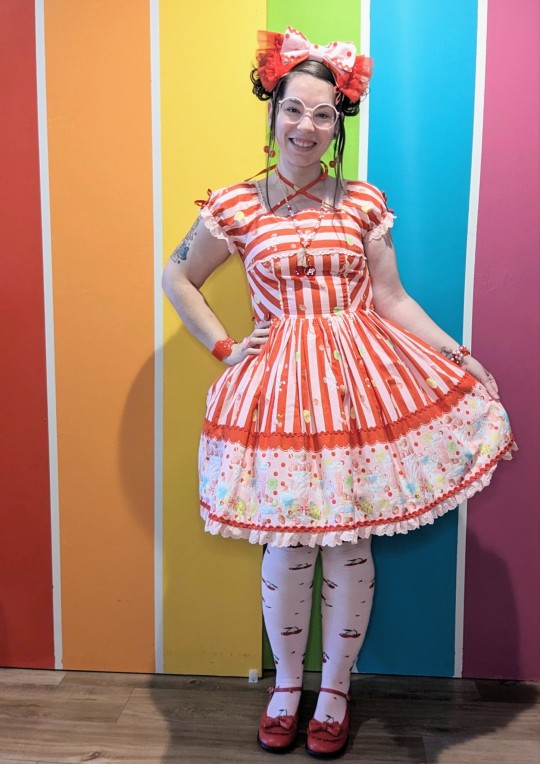
OP, necklace, rings- Angelic Pretty
Socks- Enchanted Dreamwear
Shoes- Antaina
Headbow- La Corona Rosada
Glasses- Anne Klein
#egl fashion#lolita fashion#eglcommunity#egl community#sweet lolita#kawaii fashion#kawaii#egl#egl coord#egl coordinate#egl lolita#lolita coord#fruits parlor#ap fruits parlor#angelicpretty#angelic pretty fruits parlor
35 notes
·
View notes
Text
Angelic Pretty Fruits Parlor coordinate for a local swap meet! 🍒
OP, earrings, cherry ring, cherry necklace, hair clip, wristcuffs- AP
Heart necklace, belt- Meta
Headbow- Corona Rosada
Socks- Dandy Puppeteer
Shoes- Antaina
Other- Taobao mix
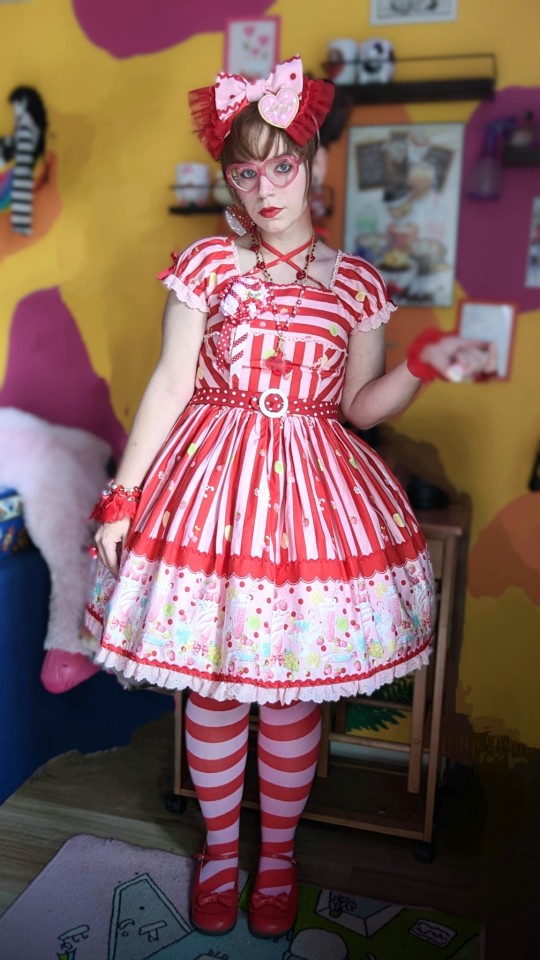
#egl fashion#lolita fashion#egl community#eglcommunity#sweet lolita#angelic pretty#kawaii#kawaii fashion#metamorphose temps de fille#egl coord#lolita coord#fruits parlor
41 notes
·
View notes